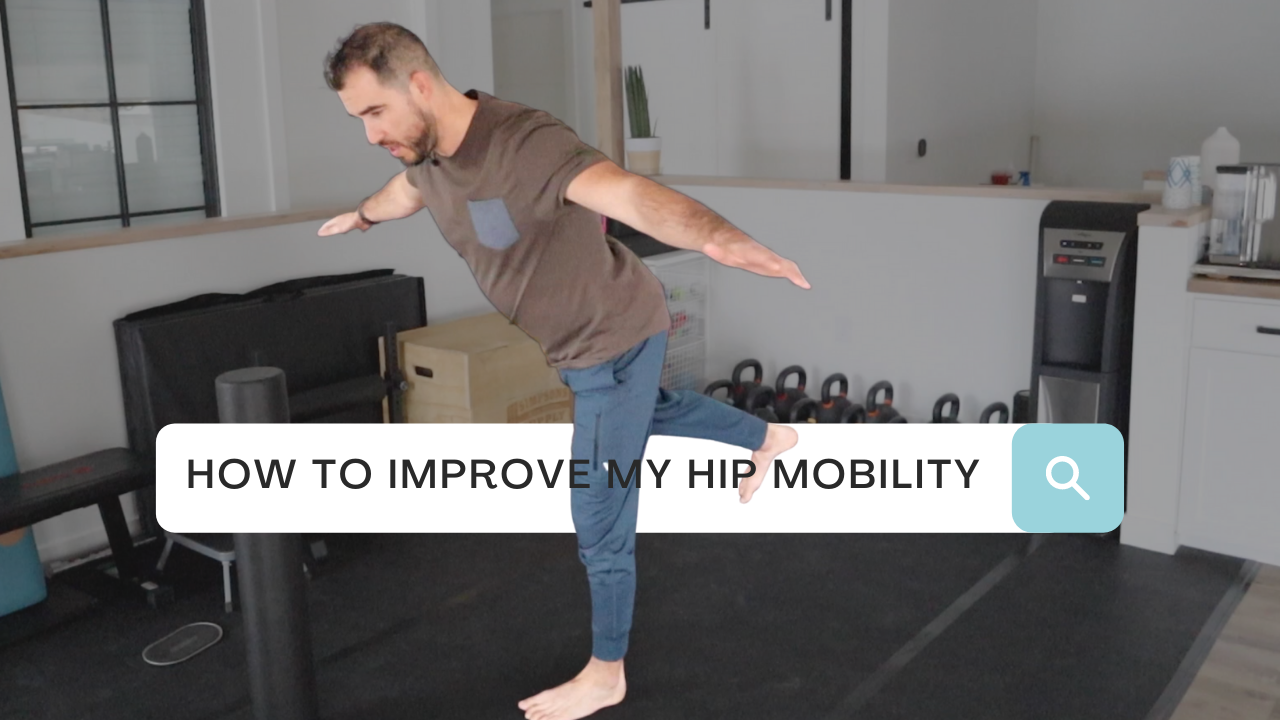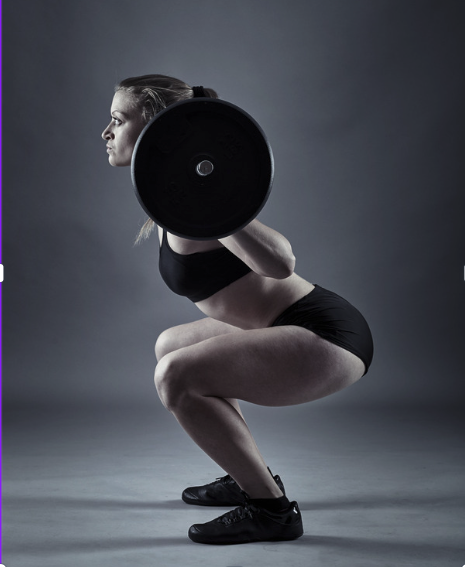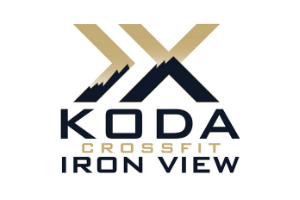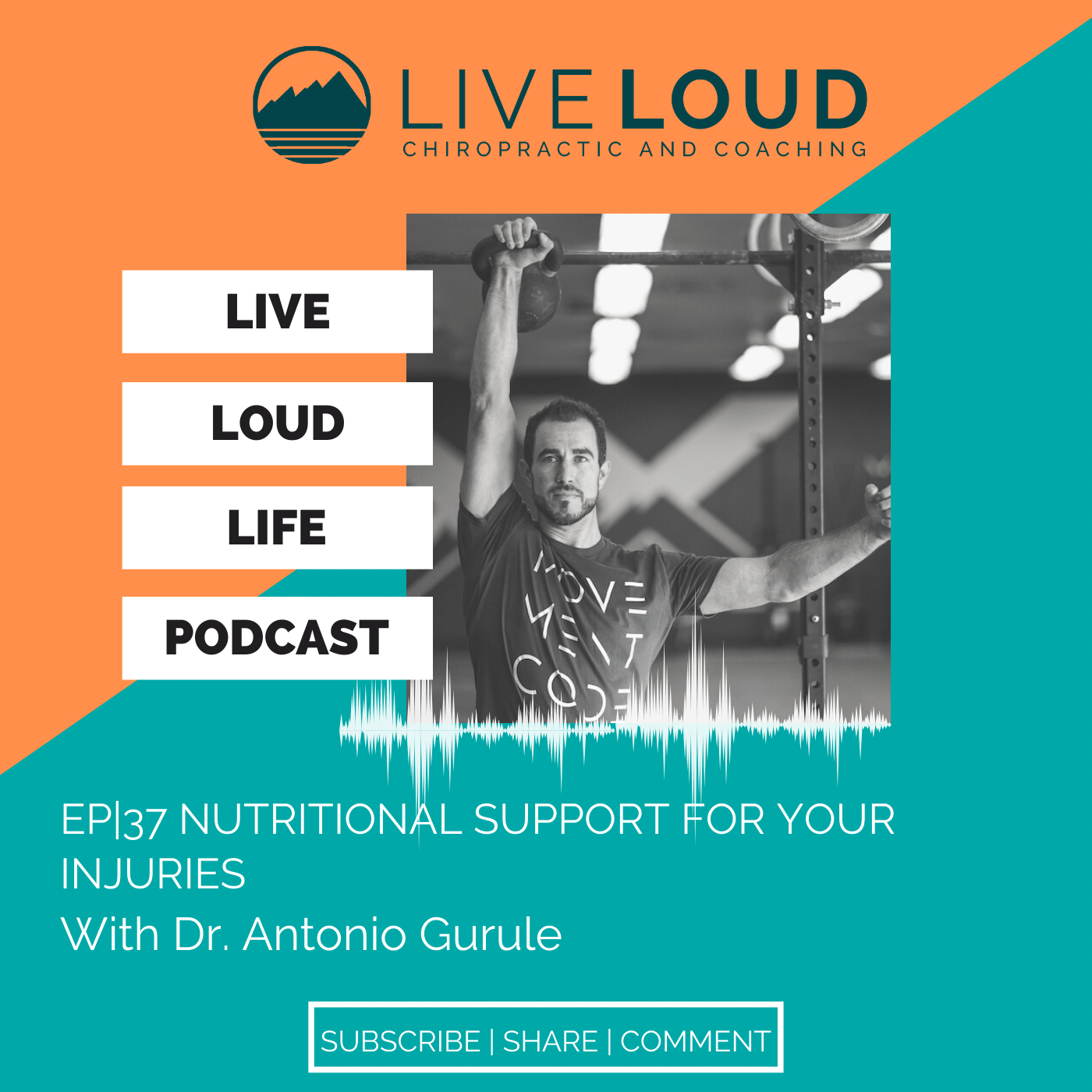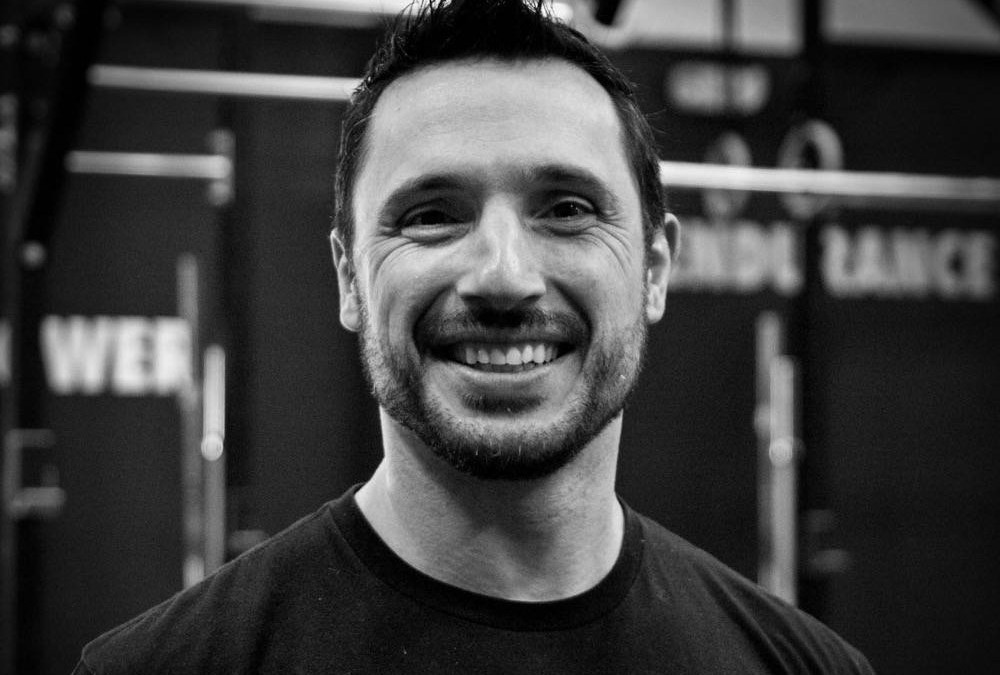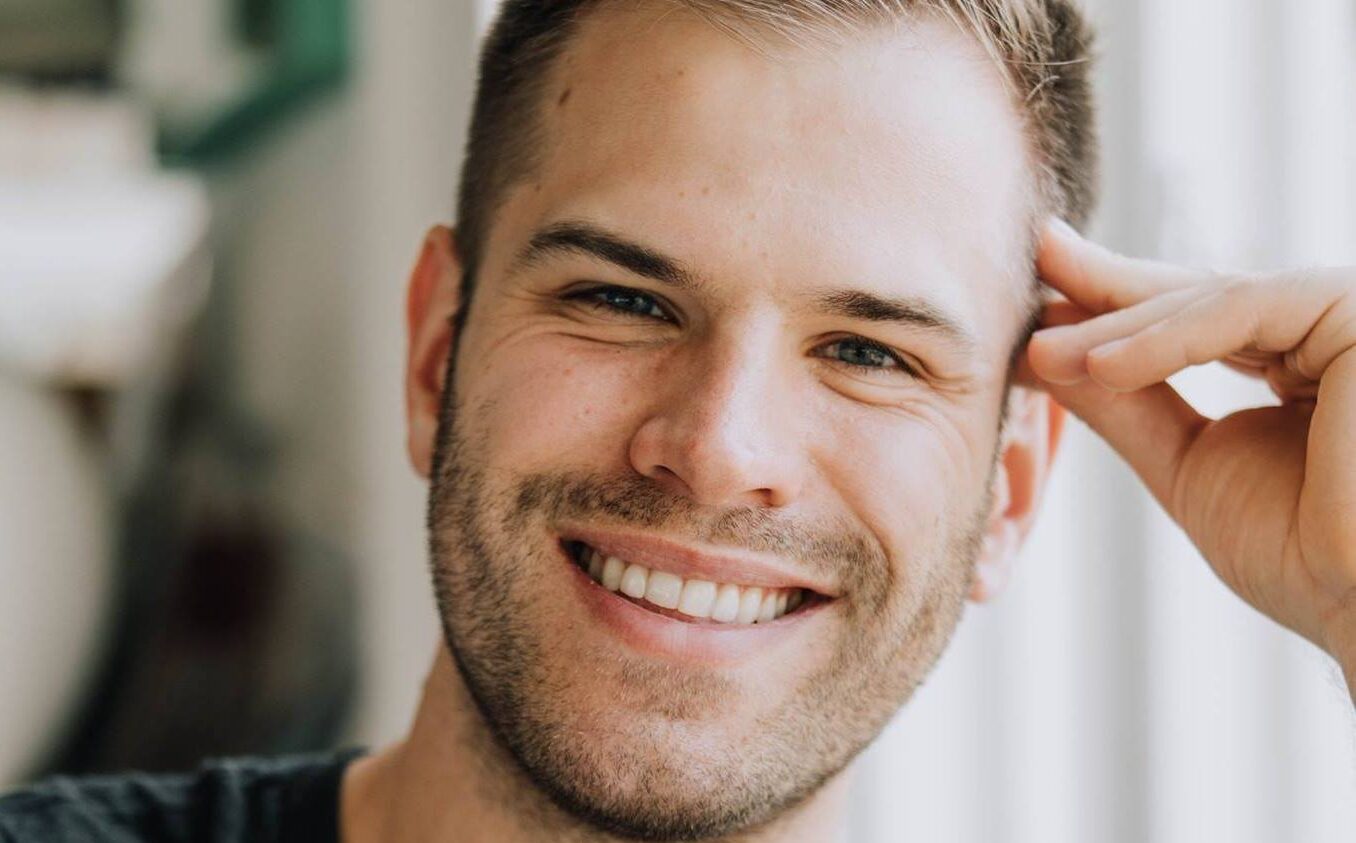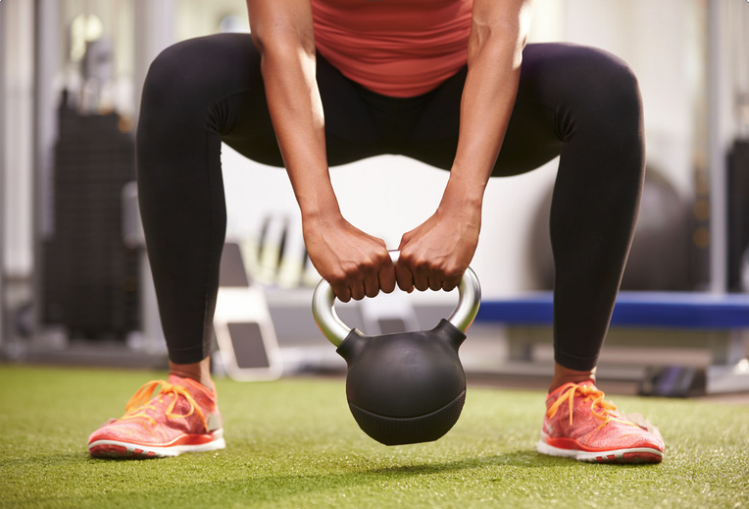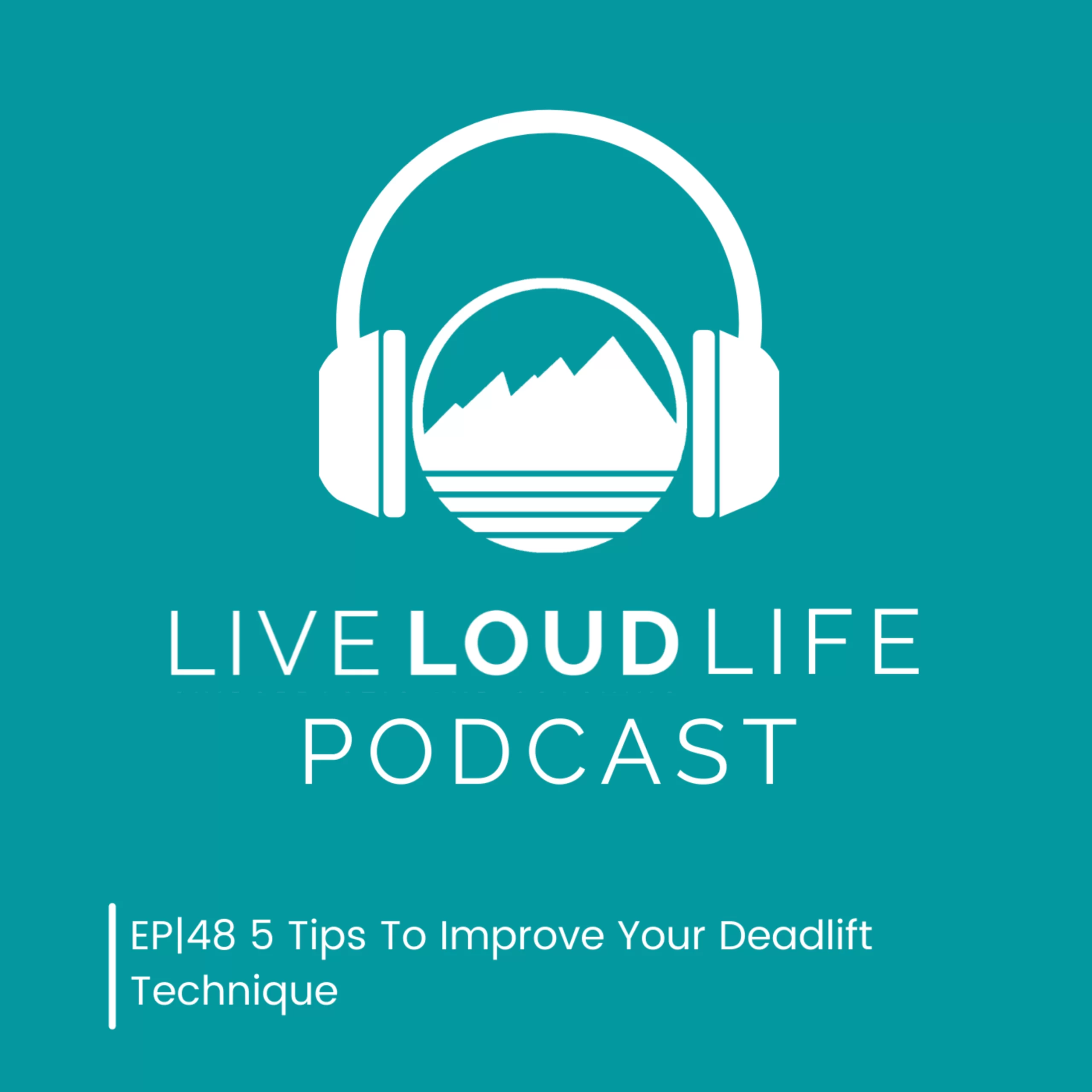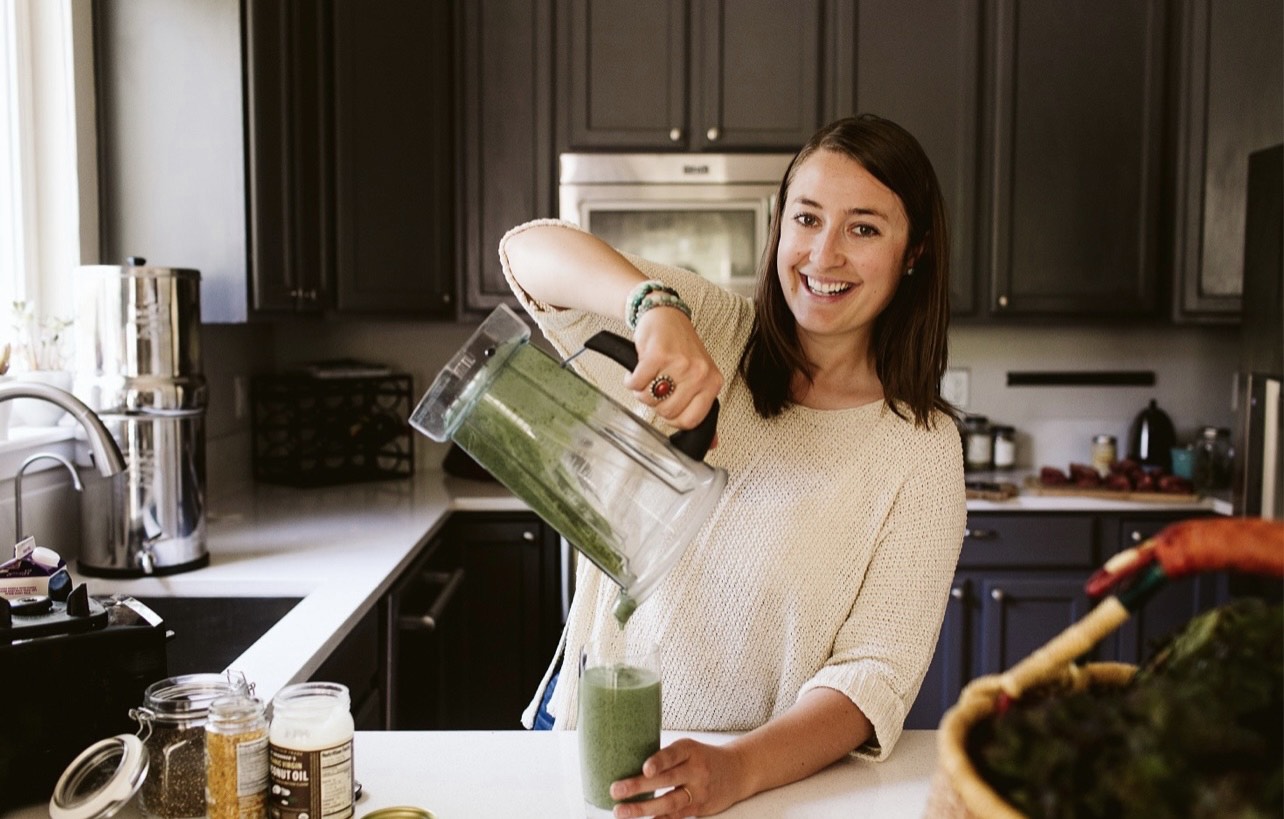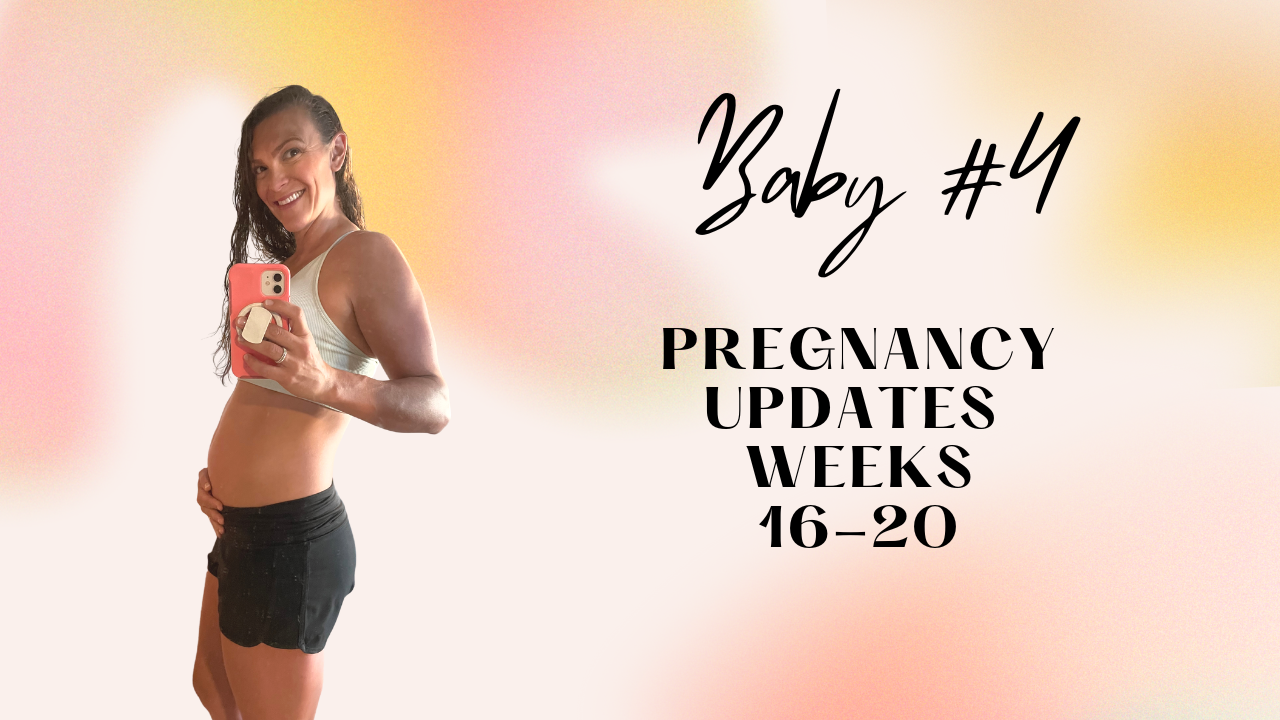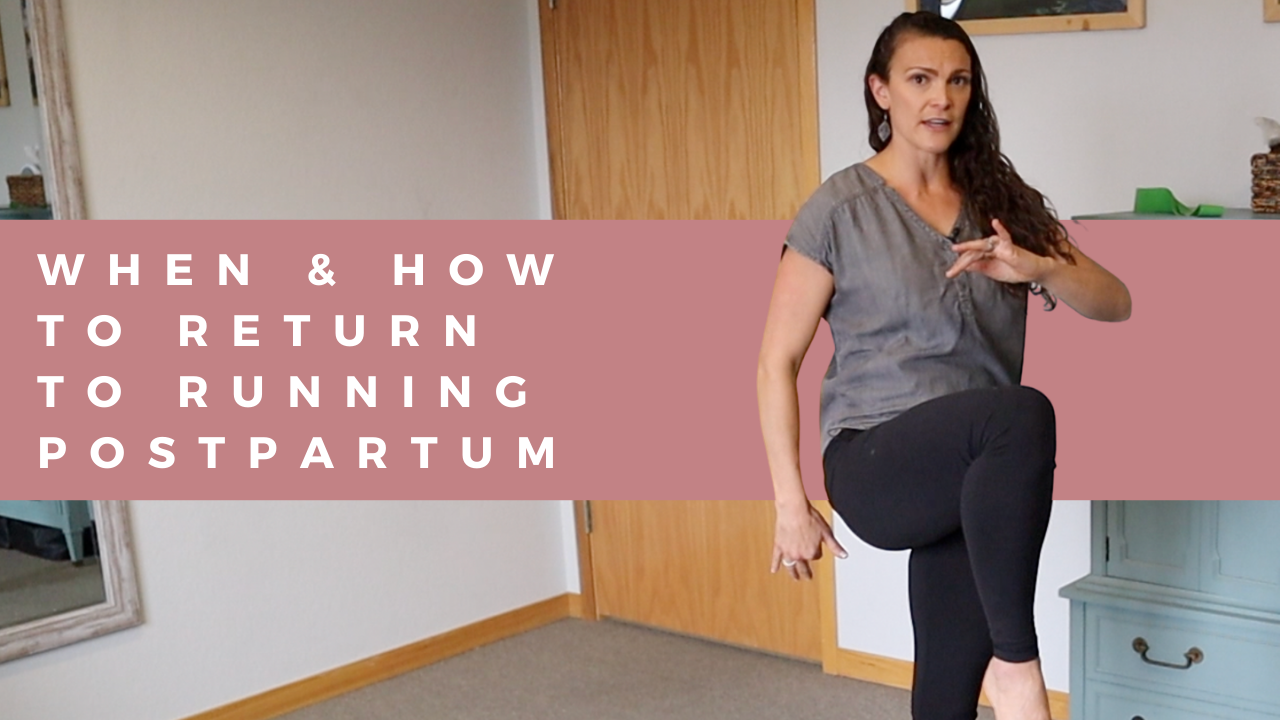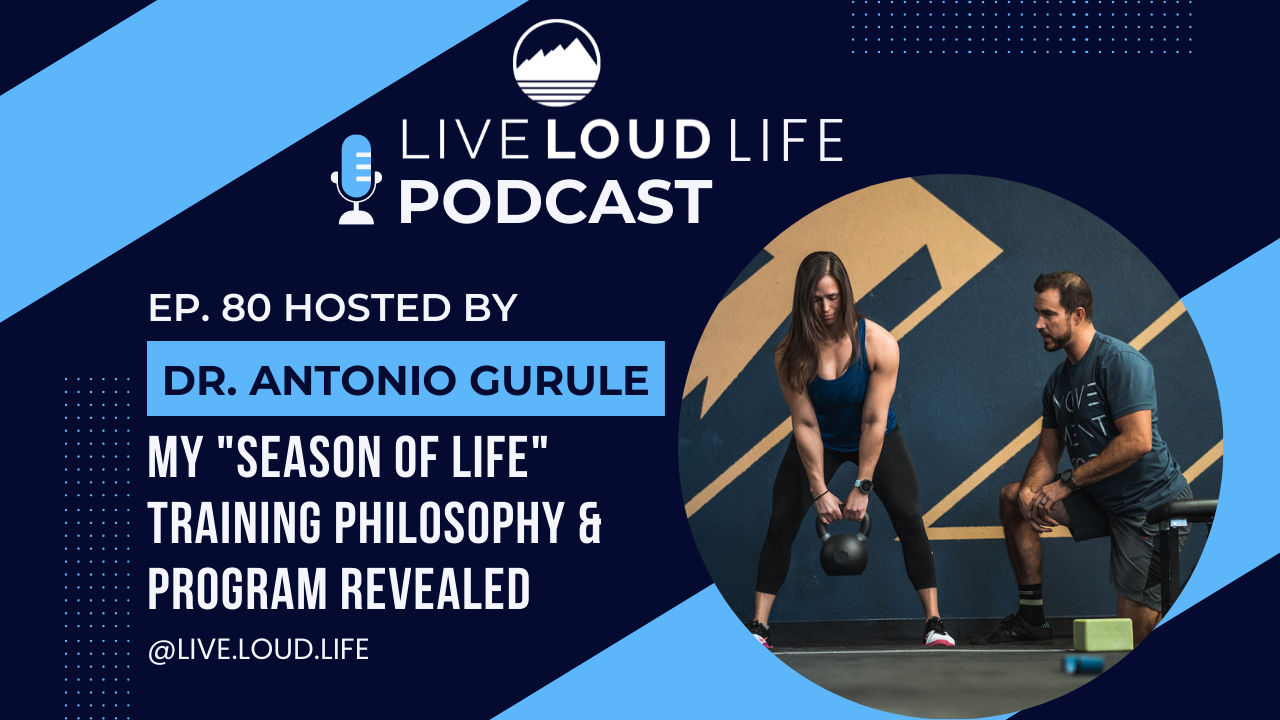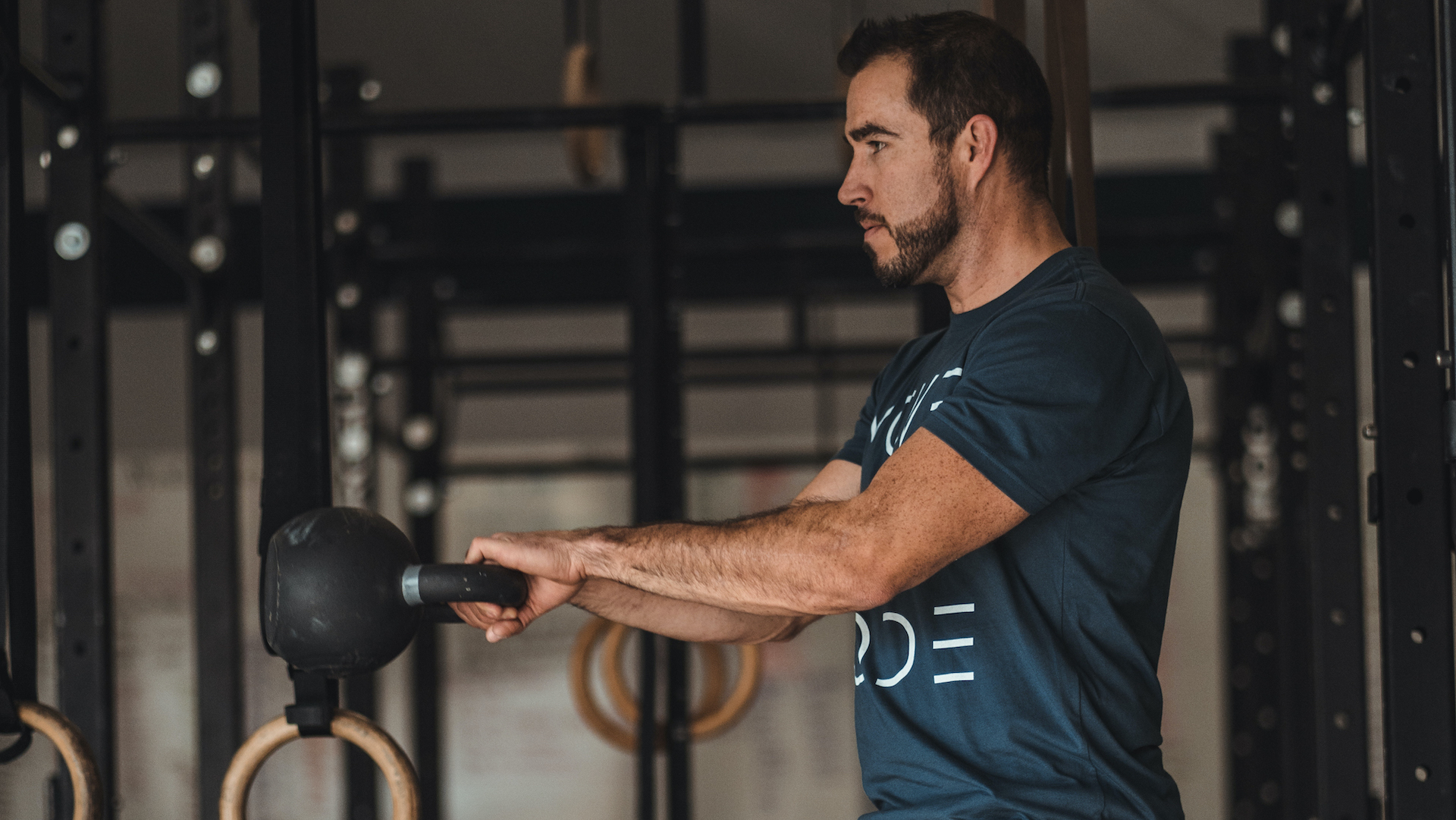Pediatric
3 Exercises to Improve Hip Mobility
Hip Mobility Series
Do you have tight hips? Do you want better hip mobility? Here is a series of three hip drills that will help improve your mobility and stability.
We’ll also articulate how to create dexterity around the hip. When we have dexterity, we have more control. Creating more control allows us to have better movement, and better movement awareness, depending on various activities.
When it comes to the hips, we typically assume we move the leg kind of around the body, which is important. But some of these drills will show how we can move the body about the hip, which is really important for sports and performance because a lot of these rotational movements or other movements are going to be our torso and our hips moving around our stable hip, which is planted into the ground.
I’m Dr. Antonio with Live Loud Chiropractic and Coaching in Lafayette, Colorado, and today I’m going to show you these hip exercises in series, and explain how you can go about them, and how they can help your hip mobility and stability.
PLAY VIDEO ⬇︎
The Hip Airplane
We can do the hip airplane in a couple of different ways. The main thing to keep in mind is when we’re doing a lot of movements around the hip, the leg is moving around the pelvis.
But here, we want to ask, how can we control the body moving around the hip?
We’re going to first start with a split stance. A split stance simply means one foot forward and one foot backward.
From here, I’m going to try to put the majority of my weight in my front leg. And my back toe is simply touching the ground for a little bit of stability. So here, what we’re going to practice is just opening and closing the hip. So the front leg ideally has toes pointing straight ahead. And the front hip ideally has the knee in line with the toes.
But you can see in the video how my torso rotates around. So what we wouldn’t want is if I’m falling, my knee comes in, or as I’m coming out, that knee is pushing out. I want to maintain some rigidity and planting through the ground. I’m thinking about is my pubic bone and my sternum, opening away, and then closing towards. I don’t twist through my back because I want this whole system to come with me.
That is the first step to understanding the whole movement.
Now, ideally, what we’re going to build up to is being able to do this without any help. So what you can do is use a foam roller or a countertop to help you balance so that we can create that first stepping stone into understanding the movement.
As you can see in the video, using my hands to balance, I’m going to reach my heel and my hand away from each other. Same thing as before: I open away from the leg, then come down and close towards the leg. (What’s nice too is you’ll actually feel a nice big stretch in the hip muscle here.)
You can also put a plate on a squat rack to use for balance and rotate on that plate as it’s anchored into a barbell or whatever rack you have.
The importance is the control of the torso moving around a fixed point (the planted foot). This is important for a lot of sports and activities that we do because a lot of what we do is plant a foot and then everything else rotates around that fixed leg.
Hip airplanes are not intended to be done fast or sloppy. These are about control, creating dexterity, and improving mobility. If you’re finding that in one of these planes of motion you feel a little tighter, you can actually hang out there a little bit and get a stretch. So there you have it–hip airplanes. If you’re not doing them, give it a try. They’re super beneficial for good hip health.
The Windmill
Now we’re focusing on creating torsion or torque within the hip. We tend to think of torsion as tight. Think of torsion as creating lines of tension where we want lines of tension, and then releasing where we don’t want it.
To do the windmill, the feet maintain a fixed position, and then we rotate in whichever direction from there. This can be a great mobility test, which I learned from a previous colleague of mine, Dr. Jordan Shallow with Pre-Script. He uses it as a test because by fixing this, we really get a true understanding of thoracic rotation and hip rotation.
I like being in a more open position for the actual mobility drill, I don’t like fixing it. Because again, primarily, my patients are not as performance-based, where they’re having a range of motion restrictions; I don’t want to put their shoulders in precarious positions, or create too much tension in an area that needs to move.
So our feet are going to move opposite to the direction of the hand that has the weight. We’re going to start with just bodyweight first, meaning it’s just my arm up–I don’t want to load yet. But you can see in the video how my toes turn.
Now, the most important part of this movement, just like when we do a hinge, is that my butt moves away from my toes, or in the same direction on my heels. The same goes true here. So if I’m square to you, and I turn 45 degrees, I do not want my hips moving. This way, my hips should be moving away from my toes in this diagonal fashion that we’ve just created.
Now, a very helpful cue is taking the front arm, or the down arm, and trying to slide your forearm down your thigh, towards your inner shin. As one arm comes up, opposite to the front leg, the other arm slides down, and my hips shift away. The majority of the weight is on your front, you can even bend the toes on the back foot a little bit if you want. This allows me to sit into that front hip more to work the mobility and stability of that front hip.
Again, those go hand in hand. When we’re trying to create stability, we have to have a certain amount of mobility. And for that mobility to happen, we have to feel oftentimes very comfortable with the stability in that hip. So that’s why we’re talking about both of these processes together.
I’m also testing and working on thoracic rotation, which is good as part of the test we have just indicated. And if I have a weight above me, I’m working on that shoulder stability as well.
But from a mobility perspective with the hip, we can now change that toe variation angle to coil and create more tension, as previously mentioned by Dr. Shallow. By squaring up, then doing my motion, I’m going to challenge the amount of hip and thoracic rotation we see.
I like doing these in sets and reps. I tend to not do them crazy heavy because I am working on it from more of a thoracic rotation and hip mobility perspective. You can load it up a little bit heavier if you want to challenge shoulder stability and some other factors as well.
I’ll try to get weight overhead. I tend to use between 12, 16, and maybe 20 kilos, and then I’ll do some easy movements. I might find, oh, this one’s a little tight. Then I’ll sit into that hip a little bit more, then I’ll come up. And when I’m down there, too, I’m playing around and just wiggling to see where I might need to focus a little more time and attention.
The windmill can be done with a kettlebell, a dumbbell, or just bodyweight. But it’s a fantastic exercise for challenging first and foremost, shoulder stability, but what I really love it for is a spinal mobility movement and a hip mobility movement, which really helps open up the hips.
The Turkish Get-up Windmill
This is great for challenging mobility and stability, but also for working on positioning. A lot of times we can’t progress with the Turkish Get-up because we’re missing certain stages that are super advantageous for stacking yourself appropriately to then transition into the next phase so that you can get up.
We’re going to do it first with bodyweight. To start, whether I’m going down or up, I’m going to be in this lunge pattern. Now, what’s important is if I’m coming down or up this middle phase, I need to square my hips. What does that mean? One toe is pointing in one direction and the back toe is facing another direction. My knees are facing 90 degrees away from each other.
This allows me to sit my bottom hip towards the back heel, allowing me to hinge down into the movement. Now, this is where the mobility comes in. A lot of people with tight hips will see that that top knee collapse down, but we want to try to keep that stacked. That’s where I get that 90-degree shape I had. I’m also starting to open up and challenge that downward knee or inner thigh as I hinge and turn. So this is the Windmill within the Turkish Get-up.
So I’ll stage this for clients or patients as practicing what this feels like to just work on hip mobility and stability in a different context. If you start to fall in as you go back and forth, we see where that tension is wanting to pull you in, and where we’re biased to not being able to appropriately load.
So we’re going to practice this first, without weight, coming up and down, loading into that hip, and coiling up and down, starting to loosen up both hips extremely well.
So let’s say, for instance, I’m coming down, I’m going to lunge back, then I’m going to windshield wiper my top foot so that my knees are at a 90-degree angle. I’m going to sit this bottom hip back towards my heel, slide the hand down in line with the knee. Now I’m in the position to kick that leg through, and then I would reverse down.
On the way up, it’s the same thing. Once I’ve come up to my hands. I’m going to pull that knee through, but it’s got to open up at 90 degrees to the top, so I can pull my leg through into that windmill. Then sit the hip back, pop up, windshield wiper the leg around, and then we’re gonna stand.
So that is the windmill position within the Turkish getup to challenge mobility, not only in the thoracic spine, definitely in the hips, but also challenging the stability of the shoulder as well.
The Prying Goblet Squat
The goblet squat is one of my favorite exercises. It is great for teaching the squat pattern, but also for showing and challenging how we integrate core stability.
It is also really good as a hip mobility drill because it puts you in a position where you’re loaded and helps you get down into that deep position where you can kind of offset that weight. But because you can get your elbows down inside of your knees, you can start to pry your hips open to use it as a mobility drill.
First take a weight, bring it up like we normally would for a goblet squat. And then we’re gonna simply squat down. And notice if I hold it away from me that’s going to allow me to stay more upright. But now I can wedge those elbows in between my knees, and start to bob and weave and shift and pry open to stretch those inner thighs and that inner hip.
Now, you could try to maintain a straight back and still do the same thing. We’re just showing that if we want to try to get into this position, to use the elbows to open up the hips and widen that space to create more mobility. This is something that we que consistently when working on a squat pattern.
Oftentimes, our squat patterns turn poor where we’re leaning forward or something. Not always because we have poor mobility, sometimes we’re just too narrow and we’re not able to utilize a hip range of motion.
So we’re trying to find that squat stance and enhance that range of motion by prying the hips open. So what we mean by pry is if my two ball and socket joints in the femurs move away from each other, now I have more space for my torso and pelvis essentially, to sit down in between, which helps me keep some more upright squat pattern, which will help in performances, such as front squats, overhead squats, even back squats, depending on the position of the bar, so prying goblet squat is a fantastic mobility drill.
Conclusion
Remember, you do need to have a certain amount of mobility to even get down into these positions. So you might need to utilize a lot of other hip mobility drills that we have to first get there because we don’t want anyone to sacrifice or create any issues by forcing yourself down low enough just to get your elbows in.
Goblet squat or prying goblet squat–use it as a good mobility drill. Use it as a great warm-up before your squats or any of your other workouts because I know it will be beneficial for you.
Keep up the great work and LIVE LOUD!
Easy Vs Hard Choices EP|52
Live LOUD Life Podcast
Lafayette Colorado
Episode 52
EP|52 Easy Vs Hard Choices
With Dr. Antonio Gurule
Episode Notes:
- The consequences of easy vs hard
- we assume that because it is a hard choice that it is actually harder for you but when you chose the easy path you actually make it much harder on yourself in the long run
- There is strength in the struggle
- Something I and all of us on a daily basis have to work on “Si vis pacem, para bellum” translation: if peace is what you want, prepare for war
- You have to work and sometimes that work is for simply peace
- keep challenging yourself and growing!
Connect With Antonio and the Live LOUD team: hello@liveloudlife.com
Subscribe to our YouTube channel here: https://www.youtube.com/c/LiveLoud
Visit the website: http://www.lifeloudlife.com
Like the Facebook page: https://www.facebook.com/liveloudchiropractic/
Follow on Instagram: https://www.instagram.com/live.loud.life/
Guiding your to the adventurous life you were made for!
If you dig this give it a like ❤️, if you’re loving it let me hear you with a comment 🗣👂, and if you know it will help someone or anyone out please share 👥📲 Videos are instructed by professionals and for educational purposes only.
Viewers should consult with their providers to see if the movements are right for them. The videos are tailored to educate families on prenatal, postpartum, and pediatric-related issues., along with general health, wellness, and pain issues such as low back pain, shoulder pain, neck pain, etc.
About Dr. Antonio Gurule
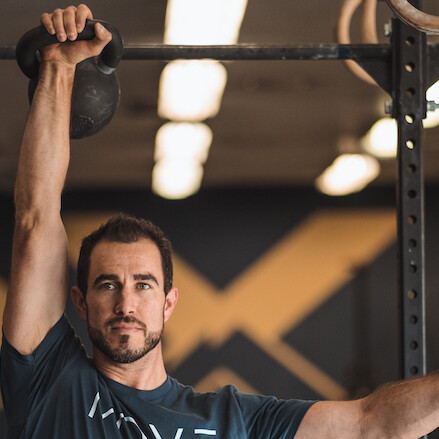
Background:
- Father
- Doctor of Chiropractic
- Owner of Live LOUD
- Personal Trainer & Health Coach
Check Out Some of Our Other Blog Posts and Podcast Episodes
Anthony Gurule 00:00
Hey what’s up guys, welcome back to another episode of the Live LOUD Life podcast. My name is Dr. Antonio, I’m your host of the Live LOUD Life podcast. My wife and I, we co-own Live LOUD Chiropractic and Coaching here in Lafayette, Colorado. We are just outside of Boulder, Colorado in Boulder County. And our mission is to help families. We want to help make families stronger, so that we can build a stronger community. We want to help guide you to the adventurous life that you and your family were meant for. And we do this through chiropractic and coaching. chiropractic, obviously being more of a hands on approach, more of a clinical conversation, clinical diagnostics, but the coaching aspect is really what we believe is, you know, the foundation of what our system methodology, whatever you want to call it is, because a lot of this comes around through just coaching suggestions and recommendations. also, you know, obviously within that comes into clinical prescriptions of certain things to eat or supplements, so on and so forth. But it’s coaching a lifestyle, it’s coaching, it’s coaching a philosophy and a foundation about how to live an active healthy life as an individual, and setting an example of a healthy active life for your family, for your immediate family, for your friends, and more importantly for your community. So stronger families to make a stronger community as a whole would be a win win, right? And that’s what we want to be able to do. we want to be able to help fill in the gaps in the holes that you’re maybe not getting from, from other roles and conditions.
Anthony Gurule 01:43
And today that’s in particular where we’re going to talk about. it’s going to be a little bit more of a shorter episode because this is more of a quote unquote, you know, just discussion around how to lay out a framework and a better understanding of how to work out or what exercises are safe or maybe not safe during pregnancy. This is a very, very common question that we get.
Anthony Gurule 02:12
My wife Nichelle has created a mini course that has some workout ideas, recommendations, and prescriptions than laid out into a workout. She guides and educates other clinicians on how to broach this topic as a chiropractor, how to better serve prenatal patients through chiropractic care, but also exercise recommendations and prescriptions, having recommendations with other personal trainers within the community whether that’s CrossFit whether that’s Orange Theory, chatting with coaches and owners and saying hey, if you have prenatal patients and they’re having these types of symptoms, or this has happened, here’s some better recommendations, not modifications. We call them lateralizations–you’re just you know, you’re doing something something different or something else we you know, we borrow that term from Charlie Weingroff, who’s a physical therapist and strength conditioning coach. But it also and also doulas, right, doulas and midwives and OBs who are directly involved with the prenatal process from nearly conception all the way through, having this conversation. we know that exercise is important during pregnancy,
Anthony Gurule 03:19
There are so many different studies that talk about the benefits of exercising during pregnancy, not only for the mom, but also for baby, which is quite interesting. They’re seeing increased cognitive-what’s the word I’m looking for? Excuse me, their cognitive output as a as an as a child through as they age is actually better from moms that actually worked out during pregnancy.
Anthony Gurule 03:50
Now this is tough, right? How do you define working out or exercise? it’s different for everybody. But we want to, and we encourage that, and yet we’re sympathetic to the different stages of life, aches and pains, so on and so forth, which obviously would limit what you can do from an exercise perspective. So you know, it’s a bit of a gray area on determining what is working out? what is exercise? What are the physical guidelines or recommendations for pregnancy? And without getting into the like, nitty gritty detail of every single thing. And obviously, every potential situation, if you had this versus this, what could happen? we’re not gonna be able to do that. What we just want to lay out is what is what are we trying to accomplish here, and we want to encourage you to stay as physically active as possible.
Anthony Gurule 04:41
And one of the things that constantly comes up is, well, should you add something in that you have not already been doing? Let’s say for instance, someone just through the stages of life with work and kids or whatever that is, they were not able to work out as much before they got pregnant, but now that they’re pregnant, whether they have more time or they understand the importance of exercises during pregnancy, well, would we say, “Well, you haven’t been exercising, so you shouldn’t do too much.” No, that doesn’t, that doesn’t really make sense. Now, we would encourage not to do too much, there’s obviously, you know, a too far swinging the pendulum of the other way. But we wouldn’t say “no, don’t exercise because you weren’t doing something before,” we just have to find those first few stepping stones to help them start to gain some momentum. and help hold their hand, if you will, So that their technique and they feel confident about lifting, or how far they’re walking or whatever that is. And that’s an important topic, because a lot of times people want to add things in, but they weren’t quite ready or weren’t doing them before. And they then assume that they’re not able to do them at all. So you do have to take that in consideration, there is a ton that you can do, and that you can still add, even though you weren’t doing them prior to pregnancy.
Anthony Gurule 05:54
Now on the big questions is, is it safe? you know, outside to contact sports, or different things like that the majority of what you’re going to do is safe for pregnancy, right? Rock climbing, we have pregnant patients that have been rock climbing before, obviously, there’s a certain inherent risk with certain sports or activities. You know, you could fall off riding your bike, you could fall over running, right, so we’re not encouraging any of these by any means. We’re just kind of, you know, setting some suggestions, if you will. And you have to take into consideration.
Anthony Gurule 06:31
Now, there are certain things to consider when you’re talking about like weightlifting, and how heavy and the intensity that you’re doing. And if you’re doing Valsalva movements, which is essentially holding your breath to maintain a more rigid or stiff torso, as you’re seeing changes in blood volume and blood pressure, you know, you do have to take that in consideration. And that is again, of course a conversation with your provider that is managing your, your pregnancy, but we recommend Mama’s weight lift, or do resistance training. During pregnancy, again, we talked about about load management and the intensity and things like that, but you can still lift and do fairly intense things. And it’s a fairly as a you know, as a scale and a wide range during pregnancy and see a ton of benefit from that. Now, are we trying to hit one rep maxes and PRs during pregnancy, I mean, some would argue yes, but I would argue, why, that’s not really an accurate representation of what your strength is anyways. So you know, you do have to to kind of keep manipulating the numbers and the weights and the intensity and the sets and reps in order to do it. But weightlifting and resistance training is safe, and it is effective. Now, outside of that, there’s not a lot of unsafe things to do, again, outside of contact sports, or things that would elicit, you know, potential trauma to you or baby based on impact we’ve had, again, not our recommendations, but some have tried very just easy scheme, because they’re in the winter months, and they wanted to and they felt very confident about not falling. So you know, you have those types of things.
Anthony Gurule 08:16
Overall, again, we’re talking about movement. You need to move, and it’s good to get your heart rate up. And it’s good to breathe hard. So that doesn’t mean just because you’re pregnant, you can’t do HIIT training or circuit training or CrossFit or Orange Theory. But you do have to listen to your body and understand certain signs that would indicate that things might be too much, right? Now those are going to be different for everyone, but a lot of this comes down to you know, lightheadedness, you know, breathing too hard. Certain aches and pains within lower extremity, chest, abdomen, so on and so forth would be obviously like your more extreme ones. If you’re becoming pale or anything like that, I mean, again, these are the same criteria, though, that would be if someone else was working out or training too hard. So it’s realistically the same thing. It’s just that your threshold level for all those most likely have gone down. And depending on what type of an athlete you were before, you’re going to be maybe a little frustrated that you’re not able to do the things you were able to do previously, which makes sense. But if you’re someone who wasn’t exercising before, you’re probably going to be a little bit more hyper aware of that, of just feeling that shortness of breath or that uneasiness. So again, we’re not saying you have to push through that because we’re not trying to set yourself up for a strength and conditioning program to increase your metabolic capacity to increase your strength and conditioning during pregnancy. We’re trying to help you maintain a healthy active pregnancy.
Anthony Gurule 09:54
Now, walking. walking is great. but in general, we encourage you to do something above and beyond walking. Obviously, again, certain things would dictate that you would not be able to do so. And this is again, any exercise. Any exercise that you do during pregnancy needs to be consulted with and work through and have a conversation with the primary physician who is managing your pregnancy, whether that’s your nurse practitioner, your midwife or your OB or obstetrician, right. But we would encourage more than just walking. walking is fantastic, but that’s kind of like your baseline minimum, right? Just like our activities, or recommendation activity guidelines. We want a few days a week of where we’re kind of just doing this steady state getting our steps in, you know, kind of pushing ourselves, we’re huffing and puffing, but still just kind of at that conversational level, but you’re not really getting a lot of benefits outside of that.
Anthony Gurule 10:55
So if you’re just walking, high five. kudos. can you do something more? Can you do some bodyweight squats? Can you do some bodyweight, you know, good mornings? can you do some walking lunges? do you have a suspension training, we’re able to do some bodyweight rows? Do you have some bands that you can do some rows with? You know, there’s a lot that you can do that allows you to get a little bit more out of that. Now, again, this all comes back down to preferences of exercises that you like to do, because that’s gonna allow you to maintain the most consistency, but then also the intensity that you like to do. And we do encourage having an open mind and at least being willing to try some high intensity things that allow you to still get your heart rate up a little bit. And it’s okay to lift more than five or 10 pounds. And not saying that that is a bad thing. There’s programs out there where it’s all directed around that where it’s lighter weight, high rep, but I just don’t want individuals and mamas to feel like they’re not able to do more and or being ashamed because other people are just saying they should back off because they’re pregnant. “why would you need a lift that much?” It fits within your strength, and your comfort, and your wheelhouse, that is totally fine.
Anthony Gurule 12:05
Again, you if you’ve been doing that enough, you understand the risk reward ratio and having a conversation with your practitioner has driven us to kind of help navigate and guide as you start to get further through pregnancies, what things maybe we need to change or manipulate. But that’s totally fine. Now outside of that, the question around safe also comes up around core exercises. diastasis recti, pelvic floor strength, so on and so forth, we want to enhance the capability of understanding how to control tension within your abdominal wall and your pelvic floor through pregnancy, because the pressure is increasing due to baby taking up more space. But we’re not we’re not necessarily we’re not gaining more strength, right.
Anthony Gurule 12:45
And so what a lot of people assume it’s when we’ve seen this, is “I don’t want diastasis. So I’m doing more core work to prevent diastasis from happening.” diastasis recti will happen in 100% of moms, it’s estimated at the week 35 Everyone will have some form of it. Now it is technically not a quote unquote diagnosis, though, until 12 weeks postpartum, because it is a normal thing that everyone will get. So you can’t diagnose someone with something that everyone will get–doesn’t make sense, right? So after that, though, if you still have weakness or spacing issues, then we can have a you know, a stronger conversation about putting a diagnosis on that.
Anthony Gurule 13:26
But what we’re trying to enhance and help is what exercises are quote unquote, not safe versus unsafe, but adding too much pressure or tension into the abdominal wall or the pelvic floor and creating more laxity. again, as that pressure for as baby’s growing starts to put more pressure on the pelvic floor and the abdominal wall. If you’re doing more things that increases the pressure within the within the abdominal cavity that’s going to push on that separation even more and/or push on that pelvic floor even more, creating potential incontinence or prolapse issues and/or more bulging and doming within the abdominal wall stretching out that separation or that gap even further, potentially making the recovery process more challenging or slightly longer. I’m not saying that it will but potentially, so we do have to take that in consideration. So we go through activation exercise of the pelvic floor, of the abdominal wall so that you better understand how to control those pressure increases while you’re lifting or exercising so that you simply can stay at a management level.
Anthony Gurule 14:28
And that in turn, helps you get through pregnancy of understanding how to lift up your older kiddo, having to lift up dog food or anything like that. It’s just managing and controlling pressure. So there’s really not anything that I would say that safe or unsafe. Now, things that we would advise against for core exercises is sit ups or crunches. You know a lot of those things that create like hanging knee raises and different things like that during pregnancy. A lot of those things that create a lot of intra abdominal pressure and tension. and especially during a flex position, that tends to put a lot more pressure on the abdominal wall, the separation where diastasis will occur as well as the pelvic floor.
Anthony Gurule 15:09
So, you know, while we never say never, there’s definitely a category of things that we definitely urge against because the risk/reward benefit and again, risk not being “injured,” But risk of potentially putting more pressure and making the recovery process on the other side harder, is not is not something that we find to be as advantageous. But you can still get the benefits of quote unquote, core exercises through full body movements such as goblet squats, such as deadlifts, you know, depending on the phase that you’re in, push ups, which are, you know, a dynamic plank. or being able to do a TRX row, which is a reverse plank as you’re just lifting yourself up. three point rows where you’re on, you know, two hands or doing like a row on a bench, where you’re in a tabletop position that’s adding anti rotation exercises. So there’s a ton that you can do that still highlights and isolates, the core isolates, sorry. that highlights and will emphasize core activation, but through a full body compound movement. And what’s great about that is during pregnancy, depending on your energy levels, it’s hard to do all the little isolated accessory and all these separate exercises as it is. So it’s kind of nice being able to combine everything, so you get more bang for your buck, especially if you’re a parent and you’re on and you’re on baby number two or three, right?
Anthony Gurule 16:31
So what exercises are safe for pregnant women to do? All are. reduce or eliminate for sure contact activities, different things like that. the increased risk activities of you know, trauma and things like that. Outside of that you’re managing pressure, I would definitely encourage reducing anything that’s heavy lifting, that’s, that’s requiring you to do Valsalva moves, you’re having to hold your breath for an extended period of time. that changes blood pressure, so on and so forth. But outside of that, Pregnancy is a completely safe time to do all exercises. we definitely as we highlighted, urge and encourage, you know, certain things over other ones just for you know, added bang for your buck or full body movements, so on and so forth. And that, but outside of that you are free to do what you want.
Anthony Gurule 17:19
If you want guidance, though, you know, there are there are trainers out there that work specifically with prenatal patients. we would love to be able to have that conversation with you if that’s something you want to bounce back or navigate. Because we do want to encourage as much as we can. A very, very active pregnancy through exercise working out or however you want to describe that. So if you found this beneficial, please like share, subscribe. if you’re pregnant, I hope you can utilize this and take some of the information for you and yourself. If you have anyone else you know… a relative a family member, a friend who is pregnant and they’re unsure they’ve been you know asking this question what things I don’t know what things I can do. I don’t know if it’s safe for baby share this video with them. We’d love to be able to provide a better frame of reference and or context to be able to ask better questions so that they can find the workout program or the movements that work best for them during their pregnancy. Until next time guys live loud .if you’re currently pregnant, Congratulations, and we look forward to helping and serving in the future.
–
Movement Modifications When You Hurt EP|51
Live LOUD Life Podcast
Lafayette Colorado
Episode 51
EP|51 Movement Modifications When You Hurt
With Dr. Antonio Gurule
Pain is inevitable
We all want to avoid it but when you can’t we need to ensure that you are staying active
One of the worst things to occur to someone who is elderly is an injury not because of the physical pain itself, but because of the immobility it creates as a result of the injury and they start to lose muscle and function deteriorates
How can you continue to move and work out in the presence of pain?
Let us help you!
Connect With Antonio and the Live LOUD team: hello@liveloudlife.com
Subscribe to our YouTube channel here: https://www.youtube.com/c/LiveLoud
Visit the website: http://www.lifeloudlife.com
Like the Facebook page: https://www.facebook.com/liveloudchiropractic/
Follow on Instagram: https://www.instagram.com/live.loud.life/
Guiding your to the adventurous life you were made for!
If you dig this give it a like ❤️, if you’re loving it let me hear you with a comment 🗣👂, and if you know it will help someone or anyone out please share 👥📲 Videos are instructed by professionals and for educational purposes only.
Viewers should consult with their providers to see if the movements are right for them. The videos are tailored to educate families on prenatal, postpartum, and pediatric-related issues., along with general health, wellness, and pain issues such as low back pain, shoulder pain, neck pain, etc.
About Dr. Antonio Gurule

Background:
- Father
- Doctor of Chiropractic
- Owner of Live LOUD
- Personal Trainer & Health Coach
Check Out Some of Our Other Blog Posts and Podcast Episodes
Anthony Gurule 00:00
Hey what’s up guys, welcome back to another episode of the Live LOUD Life podcast. My name is Dr. Antonio, I’m your host of the Live LOUD Life podcast. My wife and I, we co-own Live LOUD Chiropractic and Coaching here in Lafayette, Colorado. We are just outside of Boulder, Colorado in Boulder County. And our mission is to help families. We want to help make families stronger, so that we can build a stronger community. We want to help guide you to the adventurous life that you and your family were meant for. And we do this through chiropractic and coaching. chiropractic, obviously being more of a hands on approach, more of a clinical conversation, clinical diagnostics, but the coaching aspect is really what we believe is, you know, the foundation of what our system methodology, whatever you want to call it is, because a lot of this comes around through just coaching suggestions and recommendations. also, you know, obviously within that comes into clinical prescriptions of certain things to eat or supplements, so on and so forth. But it’s coaching a lifestyle, it’s coaching, it’s coaching a philosophy and a foundation about how to live an active healthy life as an individual, and setting an example of a healthy active life for your family, for your immediate family, for your friends, and more importantly for your community. So stronger families to make a stronger community as a whole would be a win win, right? And that’s what we want to be able to do. we want to be able to help fill in the gaps in the holes that you’re maybe not getting from, from other roles and conditions.
Anthony Gurule 01:43
And today that’s in particular where we’re going to talk about. it’s going to be a little bit more of a shorter episode because this is more of a quote unquote, you know, just discussion around how to lay out a framework and a better understanding of how to work out or what exercises are safe or maybe not safe during pregnancy. This is a very, very common question that we get.
Anthony Gurule 02:12
My wife Nichelle has created a mini course that has some workout ideas, recommendations, and prescriptions than laid out into a workout. She guides and educates other clinicians on how to broach this topic as a chiropractor, how to better serve prenatal patients through chiropractic care, but also exercise recommendations and prescriptions, having recommendations with other personal trainers within the community whether that’s CrossFit whether that’s Orange Theory, chatting with coaches and owners and saying hey, if you have prenatal patients and they’re having these types of symptoms, or this has happened, here’s some better recommendations, not modifications. We call them lateralizations–you’re just you know, you’re doing something something different or something else we you know, we borrow that term from Charlie Weingroff, who’s a physical therapist and strength conditioning coach. But it also and also doulas, right, doulas and midwives and OBs who are directly involved with the prenatal process from nearly conception all the way through, having this conversation. we know that exercise is important during pregnancy,
Anthony Gurule 03:19
There are so many different studies that talk about the benefits of exercising during pregnancy, not only for the mom, but also for baby, which is quite interesting. They’re seeing increased cognitive-what’s the word I’m looking for? Excuse me, their cognitive output as a as an as a child through as they age is actually better from moms that actually worked out during pregnancy.
Anthony Gurule 03:50
Now this is tough, right? How do you define working out or exercise? it’s different for everybody. But we want to, and we encourage that, and yet we’re sympathetic to the different stages of life, aches and pains, so on and so forth, which obviously would limit what you can do from an exercise perspective. So you know, it’s a bit of a gray area on determining what is working out? what is exercise? What are the physical guidelines or recommendations for pregnancy? And without getting into the like, nitty gritty detail of every single thing. And obviously, every potential situation, if you had this versus this, what could happen? we’re not gonna be able to do that. What we just want to lay out is what is what are we trying to accomplish here, and we want to encourage you to stay as physically active as possible.
Anthony Gurule 04:41
And one of the things that constantly comes up is, well, should you add something in that you have not already been doing? Let’s say for instance, someone just through the stages of life with work and kids or whatever that is, they were not able to work out as much before they got pregnant, but now that they’re pregnant, whether they have more time or they understand the importance of exercises during pregnancy, well, would we say, “Well, you haven’t been exercising, so you shouldn’t do too much.” No, that doesn’t, that doesn’t really make sense. Now, we would encourage not to do too much, there’s obviously, you know, a too far swinging the pendulum of the other way. But we wouldn’t say “no, don’t exercise because you weren’t doing something before,” we just have to find those first few stepping stones to help them start to gain some momentum. and help hold their hand, if you will, So that their technique and they feel confident about lifting, or how far they’re walking or whatever that is. And that’s an important topic, because a lot of times people want to add things in, but they weren’t quite ready or weren’t doing them before. And they then assume that they’re not able to do them at all. So you do have to take that in consideration, there is a ton that you can do, and that you can still add, even though you weren’t doing them prior to pregnancy.
Anthony Gurule 05:54
Now on the big questions is, is it safe? you know, outside to contact sports, or different things like that the majority of what you’re going to do is safe for pregnancy, right? Rock climbing, we have pregnant patients that have been rock climbing before, obviously, there’s a certain inherent risk with certain sports or activities. You know, you could fall off riding your bike, you could fall over running, right, so we’re not encouraging any of these by any means. We’re just kind of, you know, setting some suggestions, if you will. And you have to take into consideration.
Anthony Gurule 06:31
Now, there are certain things to consider when you’re talking about like weightlifting, and how heavy and the intensity that you’re doing. And if you’re doing Valsalva movements, which is essentially holding your breath to maintain a more rigid or stiff torso, as you’re seeing changes in blood volume and blood pressure, you know, you do have to take that in consideration. And that is again, of course a conversation with your provider that is managing your, your pregnancy, but we recommend Mama’s weight lift, or do resistance training. During pregnancy, again, we talked about about load management and the intensity and things like that, but you can still lift and do fairly intense things. And it’s a fairly as a you know, as a scale and a wide range during pregnancy and see a ton of benefit from that. Now, are we trying to hit one rep maxes and PRs during pregnancy, I mean, some would argue yes, but I would argue, why, that’s not really an accurate representation of what your strength is anyways. So you know, you do have to to kind of keep manipulating the numbers and the weights and the intensity and the sets and reps in order to do it. But weightlifting and resistance training is safe, and it is effective. Now, outside of that, there’s not a lot of unsafe things to do, again, outside of contact sports, or things that would elicit, you know, potential trauma to you or baby based on impact we’ve had, again, not our recommendations, but some have tried very just easy scheme, because they’re in the winter months, and they wanted to and they felt very confident about not falling. So you know, you have those types of things.
Anthony Gurule 08:16
Overall, again, we’re talking about movement. You need to move, and it’s good to get your heart rate up. And it’s good to breathe hard. So that doesn’t mean just because you’re pregnant, you can’t do HIIT training or circuit training or CrossFit or Orange Theory. But you do have to listen to your body and understand certain signs that would indicate that things might be too much, right? Now those are going to be different for everyone, but a lot of this comes down to you know, lightheadedness, you know, breathing too hard. Certain aches and pains within lower extremity, chest, abdomen, so on and so forth would be obviously like your more extreme ones. If you’re becoming pale or anything like that, I mean, again, these are the same criteria, though, that would be if someone else was working out or training too hard. So it’s realistically the same thing. It’s just that your threshold level for all those most likely have gone down. And depending on what type of an athlete you were before, you’re going to be maybe a little frustrated that you’re not able to do the things you were able to do previously, which makes sense. But if you’re someone who wasn’t exercising before, you’re probably going to be a little bit more hyper aware of that, of just feeling that shortness of breath or that uneasiness. So again, we’re not saying you have to push through that because we’re not trying to set yourself up for a strength and conditioning program to increase your metabolic capacity to increase your strength and conditioning during pregnancy. We’re trying to help you maintain a healthy active pregnancy.
Anthony Gurule 09:54
Now, walking. walking is great. but in general, we encourage you to do something above and beyond walking. Obviously, again, certain things would dictate that you would not be able to do so. And this is again, any exercise. Any exercise that you do during pregnancy needs to be consulted with and work through and have a conversation with the primary physician who is managing your pregnancy, whether that’s your nurse practitioner, your midwife or your OB or obstetrician, right. But we would encourage more than just walking. walking is fantastic, but that’s kind of like your baseline minimum, right? Just like our activities, or recommendation activity guidelines. We want a few days a week of where we’re kind of just doing this steady state getting our steps in, you know, kind of pushing ourselves, we’re huffing and puffing, but still just kind of at that conversational level, but you’re not really getting a lot of benefits outside of that.
Anthony Gurule 10:55
So if you’re just walking, high five. kudos. can you do something more? Can you do some bodyweight squats? Can you do some bodyweight, you know, good mornings? can you do some walking lunges? do you have a suspension training, we’re able to do some bodyweight rows? Do you have some bands that you can do some rows with? You know, there’s a lot that you can do that allows you to get a little bit more out of that. Now, again, this all comes back down to preferences of exercises that you like to do, because that’s gonna allow you to maintain the most consistency, but then also the intensity that you like to do. And we do encourage having an open mind and at least being willing to try some high intensity things that allow you to still get your heart rate up a little bit. And it’s okay to lift more than five or 10 pounds. And not saying that that is a bad thing. There’s programs out there where it’s all directed around that where it’s lighter weight, high rep, but I just don’t want individuals and mamas to feel like they’re not able to do more and or being ashamed because other people are just saying they should back off because they’re pregnant. “why would you need a lift that much?” It fits within your strength, and your comfort, and your wheelhouse, that is totally fine.
Anthony Gurule 12:05
Again, you if you’ve been doing that enough, you understand the risk reward ratio and having a conversation with your practitioner has driven us to kind of help navigate and guide as you start to get further through pregnancies, what things maybe we need to change or manipulate. But that’s totally fine. Now outside of that, the question around safe also comes up around core exercises. diastasis recti, pelvic floor strength, so on and so forth, we want to enhance the capability of understanding how to control tension within your abdominal wall and your pelvic floor through pregnancy, because the pressure is increasing due to baby taking up more space. But we’re not we’re not necessarily we’re not gaining more strength, right.
Anthony Gurule 12:45
And so what a lot of people assume it’s when we’ve seen this, is “I don’t want diastasis. So I’m doing more core work to prevent diastasis from happening.” diastasis recti will happen in 100% of moms, it’s estimated at the week 35 Everyone will have some form of it. Now it is technically not a quote unquote diagnosis, though, until 12 weeks postpartum, because it is a normal thing that everyone will get. So you can’t diagnose someone with something that everyone will get–doesn’t make sense, right? So after that, though, if you still have weakness or spacing issues, then we can have a you know, a stronger conversation about putting a diagnosis on that.
Anthony Gurule 13:26
But what we’re trying to enhance and help is what exercises are quote unquote, not safe versus unsafe, but adding too much pressure or tension into the abdominal wall or the pelvic floor and creating more laxity. again, as that pressure for as baby’s growing starts to put more pressure on the pelvic floor and the abdominal wall. If you’re doing more things that increases the pressure within the within the abdominal cavity that’s going to push on that separation even more and/or push on that pelvic floor even more, creating potential incontinence or prolapse issues and/or more bulging and doming within the abdominal wall stretching out that separation or that gap even further, potentially making the recovery process more challenging or slightly longer. I’m not saying that it will but potentially, so we do have to take that in consideration. So we go through activation exercise of the pelvic floor, of the abdominal wall so that you better understand how to control those pressure increases while you’re lifting or exercising so that you simply can stay at a management level.
Anthony Gurule 14:28
And that in turn, helps you get through pregnancy of understanding how to lift up your older kiddo, having to lift up dog food or anything like that. It’s just managing and controlling pressure. So there’s really not anything that I would say that safe or unsafe. Now, things that we would advise against for core exercises is sit ups or crunches. You know a lot of those things that create like hanging knee raises and different things like that during pregnancy. A lot of those things that create a lot of intra abdominal pressure and tension. and especially during a flex position, that tends to put a lot more pressure on the abdominal wall, the separation where diastasis will occur as well as the pelvic floor.
Anthony Gurule 15:09
So, you know, while we never say never, there’s definitely a category of things that we definitely urge against because the risk/reward benefit and again, risk not being “injured,” But risk of potentially putting more pressure and making the recovery process on the other side harder, is not is not something that we find to be as advantageous. But you can still get the benefits of quote unquote, core exercises through full body movements such as goblet squats, such as deadlifts, you know, depending on the phase that you’re in, push ups, which are, you know, a dynamic plank. or being able to do a TRX row, which is a reverse plank as you’re just lifting yourself up. three point rows where you’re on, you know, two hands or doing like a row on a bench, where you’re in a tabletop position that’s adding anti rotation exercises. So there’s a ton that you can do that still highlights and isolates, the core isolates, sorry. that highlights and will emphasize core activation, but through a full body compound movement. And what’s great about that is during pregnancy, depending on your energy levels, it’s hard to do all the little isolated accessory and all these separate exercises as it is. So it’s kind of nice being able to combine everything, so you get more bang for your buck, especially if you’re a parent and you’re on and you’re on baby number two or three, right?
Anthony Gurule 16:31
So what exercises are safe for pregnant women to do? All are. reduce or eliminate for sure contact activities, different things like that. the increased risk activities of you know, trauma and things like that. Outside of that you’re managing pressure, I would definitely encourage reducing anything that’s heavy lifting, that’s, that’s requiring you to do Valsalva moves, you’re having to hold your breath for an extended period of time. that changes blood pressure, so on and so forth. But outside of that, Pregnancy is a completely safe time to do all exercises. we definitely as we highlighted, urge and encourage, you know, certain things over other ones just for you know, added bang for your buck or full body movements, so on and so forth. And that, but outside of that you are free to do what you want.
Anthony Gurule 17:19
If you want guidance, though, you know, there are there are trainers out there that work specifically with prenatal patients. we would love to be able to have that conversation with you if that’s something you want to bounce back or navigate. Because we do want to encourage as much as we can. A very, very active pregnancy through exercise working out or however you want to describe that. So if you found this beneficial, please like share, subscribe. if you’re pregnant, I hope you can utilize this and take some of the information for you and yourself. If you have anyone else you know… a relative a family member, a friend who is pregnant and they’re unsure they’ve been you know asking this question what things I don’t know what things I can do. I don’t know if it’s safe for baby share this video with them. We’d love to be able to provide a better frame of reference and or context to be able to ask better questions so that they can find the workout program or the movements that work best for them during their pregnancy. Until next time guys live loud .if you’re currently pregnant, Congratulations, and we look forward to helping and serving in the future.
–
5 Tips To Improve Your Deadlift Technique EP|48
Live LOUD Life Podcast
Lafayette Colorado
Episode 48
EP|48 5 Tips To Improve Your Deadlift Technique
With Dr. Antonio Gurule
5 Tips To Improve Your Deadlift Technique
1. Keep The Bar Close to You
2. Do Not Yank The Bar From The Floor
3. Do Not Let Your Hips Raise First
4. Stiffen Your Torso and Expand Your Canister
5. Wedge and Tension Into The Bar
Click Here to Watch the YouTube Video Reviewing the Tips
Connect With Antonio and the Live LOUD team:
Subscribe to my YouTube channel here: https://www.youtube.com/c/LiveLoud
Visit the website: http://www.lifeloudlife.com
Like the Facebook page: https://www.facebook.com/liveloudchiropractic/
Follow on Instagram: https://www.instagram.com/live.loud.life/
Guiding your to the adventurous life you were made for!
.
If you dig this give it a like ❤️, if you’re loving it let me hear you with a comment 🗣👂, and if you know it will help someone or anyone out please share 👥📲
About Dr. Antonio Gurule

Background:
- Father
- Doctor of Chiropractic
- Owner of Live LOUD
- Personal Trainer & Health Coach
Check Out Some of Our Other Blog Posts and Podcast Episodes
Anthony Gurule 00:00
Hey what’s up guys, welcome back to another episode of the Live LOUD Life podcast. My name is Dr. Antonio, I’m your host of the Live LOUD Life podcast. My wife and I, we co-own Live LOUD Chiropractic and Coaching here in Lafayette, Colorado. We are just outside of Boulder, Colorado in Boulder County. And our mission is to help families. We want to help make families stronger, so that we can build a stronger community. We want to help guide you to the adventurous life that you and your family were meant for. And we do this through chiropractic and coaching. chiropractic, obviously being more of a hands on approach, more of a clinical conversation, clinical diagnostics, but the coaching aspect is really what we believe is, you know, the foundation of what our system methodology, whatever you want to call it is, because a lot of this comes around through just coaching suggestions and recommendations. also, you know, obviously within that comes into clinical prescriptions of certain things to eat or supplements, so on and so forth. But it’s coaching a lifestyle, it’s coaching, it’s coaching a philosophy and a foundation about how to live an active healthy life as an individual, and setting an example of a healthy active life for your family, for your immediate family, for your friends, and more importantly for your community. So stronger families to make a stronger community as a whole would be a win win, right? And that’s what we want to be able to do. we want to be able to help fill in the gaps in the holes that you’re maybe not getting from, from other roles and conditions.
Anthony Gurule 01:43
And today that’s in particular where we’re going to talk about. it’s going to be a little bit more of a shorter episode because this is more of a quote unquote, you know, just discussion around how to lay out a framework and a better understanding of how to work out or what exercises are safe or maybe not safe during pregnancy. This is a very, very common question that we get.
Anthony Gurule 02:12
My wife Nichelle has created a mini course that has some workout ideas, recommendations, and prescriptions than laid out into a workout. She guides and educates other clinicians on how to broach this topic as a chiropractor, how to better serve prenatal patients through chiropractic care, but also exercise recommendations and prescriptions, having recommendations with other personal trainers within the community whether that’s CrossFit whether that’s Orange Theory, chatting with coaches and owners and saying hey, if you have prenatal patients and they’re having these types of symptoms, or this has happened, here’s some better recommendations, not modifications. We call them lateralizations–you’re just you know, you’re doing something something different or something else we you know, we borrow that term from Charlie Weingroff, who’s a physical therapist and strength conditioning coach. But it also and also doulas, right, doulas and midwives and OBs who are directly involved with the prenatal process from nearly conception all the way through, having this conversation. we know that exercise is important during pregnancy,
Anthony Gurule 03:19
There are so many different studies that talk about the benefits of exercising during pregnancy, not only for the mom, but also for baby, which is quite interesting. They’re seeing increased cognitive-what’s the word I’m looking for? Excuse me, their cognitive output as a as an as a child through as they age is actually better from moms that actually worked out during pregnancy.
Anthony Gurule 03:50
Now this is tough, right? How do you define working out or exercise? it’s different for everybody. But we want to, and we encourage that, and yet we’re sympathetic to the different stages of life, aches and pains, so on and so forth, which obviously would limit what you can do from an exercise perspective. So you know, it’s a bit of a gray area on determining what is working out? what is exercise? What are the physical guidelines or recommendations for pregnancy? And without getting into the like, nitty gritty detail of every single thing. And obviously, every potential situation, if you had this versus this, what could happen? we’re not gonna be able to do that. What we just want to lay out is what is what are we trying to accomplish here, and we want to encourage you to stay as physically active as possible.
Anthony Gurule 04:41
And one of the things that constantly comes up is, well, should you add something in that you have not already been doing? Let’s say for instance, someone just through the stages of life with work and kids or whatever that is, they were not able to work out as much before they got pregnant, but now that they’re pregnant, whether they have more time or they understand the importance of exercises during pregnancy, well, would we say, “Well, you haven’t been exercising, so you shouldn’t do too much.” No, that doesn’t, that doesn’t really make sense. Now, we would encourage not to do too much, there’s obviously, you know, a too far swinging the pendulum of the other way. But we wouldn’t say “no, don’t exercise because you weren’t doing something before,” we just have to find those first few stepping stones to help them start to gain some momentum. and help hold their hand, if you will, So that their technique and they feel confident about lifting, or how far they’re walking or whatever that is. And that’s an important topic, because a lot of times people want to add things in, but they weren’t quite ready or weren’t doing them before. And they then assume that they’re not able to do them at all. So you do have to take that in consideration, there is a ton that you can do, and that you can still add, even though you weren’t doing them prior to pregnancy.
Anthony Gurule 05:54
Now on the big questions is, is it safe? you know, outside to contact sports, or different things like that the majority of what you’re going to do is safe for pregnancy, right? Rock climbing, we have pregnant patients that have been rock climbing before, obviously, there’s a certain inherent risk with certain sports or activities. You know, you could fall off riding your bike, you could fall over running, right, so we’re not encouraging any of these by any means. We’re just kind of, you know, setting some suggestions, if you will. And you have to take into consideration.
Anthony Gurule 06:31
Now, there are certain things to consider when you’re talking about like weightlifting, and how heavy and the intensity that you’re doing. And if you’re doing Valsalva movements, which is essentially holding your breath to maintain a more rigid or stiff torso, as you’re seeing changes in blood volume and blood pressure, you know, you do have to take that in consideration. And that is again, of course a conversation with your provider that is managing your, your pregnancy, but we recommend Mama’s weight lift, or do resistance training. During pregnancy, again, we talked about about load management and the intensity and things like that, but you can still lift and do fairly intense things. And it’s a fairly as a you know, as a scale and a wide range during pregnancy and see a ton of benefit from that. Now, are we trying to hit one rep maxes and PRs during pregnancy, I mean, some would argue yes, but I would argue, why, that’s not really an accurate representation of what your strength is anyways. So you know, you do have to to kind of keep manipulating the numbers and the weights and the intensity and the sets and reps in order to do it. But weightlifting and resistance training is safe, and it is effective. Now, outside of that, there’s not a lot of unsafe things to do, again, outside of contact sports, or things that would elicit, you know, potential trauma to you or baby based on impact we’ve had, again, not our recommendations, but some have tried very just easy scheme, because they’re in the winter months, and they wanted to and they felt very confident about not falling. So you know, you have those types of things.
Anthony Gurule 08:16
Overall, again, we’re talking about movement. You need to move, and it’s good to get your heart rate up. And it’s good to breathe hard. So that doesn’t mean just because you’re pregnant, you can’t do HIIT training or circuit training or CrossFit or Orange Theory. But you do have to listen to your body and understand certain signs that would indicate that things might be too much, right? Now those are going to be different for everyone, but a lot of this comes down to you know, lightheadedness, you know, breathing too hard. Certain aches and pains within lower extremity, chest, abdomen, so on and so forth would be obviously like your more extreme ones. If you’re becoming pale or anything like that, I mean, again, these are the same criteria, though, that would be if someone else was working out or training too hard. So it’s realistically the same thing. It’s just that your threshold level for all those most likely have gone down. And depending on what type of an athlete you were before, you’re going to be maybe a little frustrated that you’re not able to do the things you were able to do previously, which makes sense. But if you’re someone who wasn’t exercising before, you’re probably going to be a little bit more hyper aware of that, of just feeling that shortness of breath or that uneasiness. So again, we’re not saying you have to push through that because we’re not trying to set yourself up for a strength and conditioning program to increase your metabolic capacity to increase your strength and conditioning during pregnancy. We’re trying to help you maintain a healthy active pregnancy.
Anthony Gurule 09:54
Now, walking. walking is great. but in general, we encourage you to do something above and beyond walking. Obviously, again, certain things would dictate that you would not be able to do so. And this is again, any exercise. Any exercise that you do during pregnancy needs to be consulted with and work through and have a conversation with the primary physician who is managing your pregnancy, whether that’s your nurse practitioner, your midwife or your OB or obstetrician, right. But we would encourage more than just walking. walking is fantastic, but that’s kind of like your baseline minimum, right? Just like our activities, or recommendation activity guidelines. We want a few days a week of where we’re kind of just doing this steady state getting our steps in, you know, kind of pushing ourselves, we’re huffing and puffing, but still just kind of at that conversational level, but you’re not really getting a lot of benefits outside of that.
Anthony Gurule 10:55
So if you’re just walking, high five. kudos. can you do something more? Can you do some bodyweight squats? Can you do some bodyweight, you know, good mornings? can you do some walking lunges? do you have a suspension training, we’re able to do some bodyweight rows? Do you have some bands that you can do some rows with? You know, there’s a lot that you can do that allows you to get a little bit more out of that. Now, again, this all comes back down to preferences of exercises that you like to do, because that’s gonna allow you to maintain the most consistency, but then also the intensity that you like to do. And we do encourage having an open mind and at least being willing to try some high intensity things that allow you to still get your heart rate up a little bit. And it’s okay to lift more than five or 10 pounds. And not saying that that is a bad thing. There’s programs out there where it’s all directed around that where it’s lighter weight, high rep, but I just don’t want individuals and mamas to feel like they’re not able to do more and or being ashamed because other people are just saying they should back off because they’re pregnant. “why would you need a lift that much?” It fits within your strength, and your comfort, and your wheelhouse, that is totally fine.
Anthony Gurule 12:05
Again, you if you’ve been doing that enough, you understand the risk reward ratio and having a conversation with your practitioner has driven us to kind of help navigate and guide as you start to get further through pregnancies, what things maybe we need to change or manipulate. But that’s totally fine. Now outside of that, the question around safe also comes up around core exercises. diastasis recti, pelvic floor strength, so on and so forth, we want to enhance the capability of understanding how to control tension within your abdominal wall and your pelvic floor through pregnancy, because the pressure is increasing due to baby taking up more space. But we’re not we’re not necessarily we’re not gaining more strength, right.
Anthony Gurule 12:45
And so what a lot of people assume it’s when we’ve seen this, is “I don’t want diastasis. So I’m doing more core work to prevent diastasis from happening.” diastasis recti will happen in 100% of moms, it’s estimated at the week 35 Everyone will have some form of it. Now it is technically not a quote unquote diagnosis, though, until 12 weeks postpartum, because it is a normal thing that everyone will get. So you can’t diagnose someone with something that everyone will get–doesn’t make sense, right? So after that, though, if you still have weakness or spacing issues, then we can have a you know, a stronger conversation about putting a diagnosis on that.
Anthony Gurule 13:26
But what we’re trying to enhance and help is what exercises are quote unquote, not safe versus unsafe, but adding too much pressure or tension into the abdominal wall or the pelvic floor and creating more laxity. again, as that pressure for as baby’s growing starts to put more pressure on the pelvic floor and the abdominal wall. If you’re doing more things that increases the pressure within the within the abdominal cavity that’s going to push on that separation even more and/or push on that pelvic floor even more, creating potential incontinence or prolapse issues and/or more bulging and doming within the abdominal wall stretching out that separation or that gap even further, potentially making the recovery process more challenging or slightly longer. I’m not saying that it will but potentially, so we do have to take that in consideration. So we go through activation exercise of the pelvic floor, of the abdominal wall so that you better understand how to control those pressure increases while you’re lifting or exercising so that you simply can stay at a management level.
Anthony Gurule 14:28
And that in turn, helps you get through pregnancy of understanding how to lift up your older kiddo, having to lift up dog food or anything like that. It’s just managing and controlling pressure. So there’s really not anything that I would say that safe or unsafe. Now, things that we would advise against for core exercises is sit ups or crunches. You know a lot of those things that create like hanging knee raises and different things like that during pregnancy. A lot of those things that create a lot of intra abdominal pressure and tension. and especially during a flex position, that tends to put a lot more pressure on the abdominal wall, the separation where diastasis will occur as well as the pelvic floor.
Anthony Gurule 15:09
So, you know, while we never say never, there’s definitely a category of things that we definitely urge against because the risk/reward benefit and again, risk not being “injured,” But risk of potentially putting more pressure and making the recovery process on the other side harder, is not is not something that we find to be as advantageous. But you can still get the benefits of quote unquote, core exercises through full body movements such as goblet squats, such as deadlifts, you know, depending on the phase that you’re in, push ups, which are, you know, a dynamic plank. or being able to do a TRX row, which is a reverse plank as you’re just lifting yourself up. three point rows where you’re on, you know, two hands or doing like a row on a bench, where you’re in a tabletop position that’s adding anti rotation exercises. So there’s a ton that you can do that still highlights and isolates, the core isolates, sorry. that highlights and will emphasize core activation, but through a full body compound movement. And what’s great about that is during pregnancy, depending on your energy levels, it’s hard to do all the little isolated accessory and all these separate exercises as it is. So it’s kind of nice being able to combine everything, so you get more bang for your buck, especially if you’re a parent and you’re on and you’re on baby number two or three, right?
Anthony Gurule 16:31
So what exercises are safe for pregnant women to do? All are. reduce or eliminate for sure contact activities, different things like that. the increased risk activities of you know, trauma and things like that. Outside of that you’re managing pressure, I would definitely encourage reducing anything that’s heavy lifting, that’s, that’s requiring you to do Valsalva moves, you’re having to hold your breath for an extended period of time. that changes blood pressure, so on and so forth. But outside of that, Pregnancy is a completely safe time to do all exercises. we definitely as we highlighted, urge and encourage, you know, certain things over other ones just for you know, added bang for your buck or full body movements, so on and so forth. And that, but outside of that you are free to do what you want.
Anthony Gurule 17:19
If you want guidance, though, you know, there are there are trainers out there that work specifically with prenatal patients. we would love to be able to have that conversation with you if that’s something you want to bounce back or navigate. Because we do want to encourage as much as we can. A very, very active pregnancy through exercise working out or however you want to describe that. So if you found this beneficial, please like share, subscribe. if you’re pregnant, I hope you can utilize this and take some of the information for you and yourself. If you have anyone else you know… a relative a family member, a friend who is pregnant and they’re unsure they’ve been you know asking this question what things I don’t know what things I can do. I don’t know if it’s safe for baby share this video with them. We’d love to be able to provide a better frame of reference and or context to be able to ask better questions so that they can find the workout program or the movements that work best for them during their pregnancy. Until next time guys live loud .if you’re currently pregnant, Congratulations, and we look forward to helping and serving in the future.
–
Nutritional Support For Injuries EP|37
Live LOUD Life Podcast
Lafayette Colorado
Episode 37
EP|37 Nutritional Support For Injuries
With Dr. Antonio Gurule
Phase 1 Inflammation Stage
- Anti-inflammatory support
- Omegas
- Fish
- Tumeric
- Curcumin
- Bromaline
- Reduce pro-inflammatory foods and diets
Phase 2 Proliferation Stage
- Anabolic stage
- Rebuilding tissue
- Protein
- Fats
- Carbohydrates
Phase 3 Remodeling
- Pretty much the same as the proliferation phase with a stronger focus on reconditioning the tendons
Additional Micronutrient Support
Vit A
- Early immunological support
Vit C
- Collagen synthesis support
Copper
- Formation of red blood cells
Zinc
- Enzymatic reactions
Calcium and Iron
- Needed for fracture healing support
About Dr. Antonio Gurule

Background:
- Father
- Doctor of Chiropractic
- Owner of Live LOUD
- Personal Trainer & Health Coach
Check Out Some of Our Other Blog Posts and Podcast Episodes
Anthony Gurule 00:00
Hey what’s up guys, welcome back to another episode of the Live LOUD Life podcast. My name is Dr. Antonio, I’m your host of the Live LOUD Life podcast. My wife and I, we co-own Live LOUD Chiropractic and Coaching here in Lafayette, Colorado. We are just outside of Boulder, Colorado in Boulder County. And our mission is to help families. We want to help make families stronger, so that we can build a stronger community. We want to help guide you to the adventurous life that you and your family were meant for. And we do this through chiropractic and coaching. chiropractic, obviously being more of a hands on approach, more of a clinical conversation, clinical diagnostics, but the coaching aspect is really what we believe is, you know, the foundation of what our system methodology, whatever you want to call it is, because a lot of this comes around through just coaching suggestions and recommendations. also, you know, obviously within that comes into clinical prescriptions of certain things to eat or supplements, so on and so forth. But it’s coaching a lifestyle, it’s coaching, it’s coaching a philosophy and a foundation about how to live an active healthy life as an individual, and setting an example of a healthy active life for your family, for your immediate family, for your friends, and more importantly for your community. So stronger families to make a stronger community as a whole would be a win win, right? And that’s what we want to be able to do. we want to be able to help fill in the gaps in the holes that you’re maybe not getting from, from other roles and conditions.
Anthony Gurule 01:43
And today that’s in particular where we’re going to talk about. it’s going to be a little bit more of a shorter episode because this is more of a quote unquote, you know, just discussion around how to lay out a framework and a better understanding of how to work out or what exercises are safe or maybe not safe during pregnancy. This is a very, very common question that we get.
Anthony Gurule 02:12
My wife Nichelle has created a mini course that has some workout ideas, recommendations, and prescriptions than laid out into a workout. She guides and educates other clinicians on how to broach this topic as a chiropractor, how to better serve prenatal patients through chiropractic care, but also exercise recommendations and prescriptions, having recommendations with other personal trainers within the community whether that’s CrossFit whether that’s Orange Theory, chatting with coaches and owners and saying hey, if you have prenatal patients and they’re having these types of symptoms, or this has happened, here’s some better recommendations, not modifications. We call them lateralizations–you’re just you know, you’re doing something something different or something else we you know, we borrow that term from Charlie Weingroff, who’s a physical therapist and strength conditioning coach. But it also and also doulas, right, doulas and midwives and OBs who are directly involved with the prenatal process from nearly conception all the way through, having this conversation. we know that exercise is important during pregnancy,
Anthony Gurule 03:19
There are so many different studies that talk about the benefits of exercising during pregnancy, not only for the mom, but also for baby, which is quite interesting. They’re seeing increased cognitive-what’s the word I’m looking for? Excuse me, their cognitive output as a as an as a child through as they age is actually better from moms that actually worked out during pregnancy.
Anthony Gurule 03:50
Now this is tough, right? How do you define working out or exercise? it’s different for everybody. But we want to, and we encourage that, and yet we’re sympathetic to the different stages of life, aches and pains, so on and so forth, which obviously would limit what you can do from an exercise perspective. So you know, it’s a bit of a gray area on determining what is working out? what is exercise? What are the physical guidelines or recommendations for pregnancy? And without getting into the like, nitty gritty detail of every single thing. And obviously, every potential situation, if you had this versus this, what could happen? we’re not gonna be able to do that. What we just want to lay out is what is what are we trying to accomplish here, and we want to encourage you to stay as physically active as possible.
Anthony Gurule 04:41
And one of the things that constantly comes up is, well, should you add something in that you have not already been doing? Let’s say for instance, someone just through the stages of life with work and kids or whatever that is, they were not able to work out as much before they got pregnant, but now that they’re pregnant, whether they have more time or they understand the importance of exercises during pregnancy, well, would we say, “Well, you haven’t been exercising, so you shouldn’t do too much.” No, that doesn’t, that doesn’t really make sense. Now, we would encourage not to do too much, there’s obviously, you know, a too far swinging the pendulum of the other way. But we wouldn’t say “no, don’t exercise because you weren’t doing something before,” we just have to find those first few stepping stones to help them start to gain some momentum. and help hold their hand, if you will, So that their technique and they feel confident about lifting, or how far they’re walking or whatever that is. And that’s an important topic, because a lot of times people want to add things in, but they weren’t quite ready or weren’t doing them before. And they then assume that they’re not able to do them at all. So you do have to take that in consideration, there is a ton that you can do, and that you can still add, even though you weren’t doing them prior to pregnancy.
Anthony Gurule 05:54
Now on the big questions is, is it safe? you know, outside to contact sports, or different things like that the majority of what you’re going to do is safe for pregnancy, right? Rock climbing, we have pregnant patients that have been rock climbing before, obviously, there’s a certain inherent risk with certain sports or activities. You know, you could fall off riding your bike, you could fall over running, right, so we’re not encouraging any of these by any means. We’re just kind of, you know, setting some suggestions, if you will. And you have to take into consideration.
Anthony Gurule 06:31
Now, there are certain things to consider when you’re talking about like weightlifting, and how heavy and the intensity that you’re doing. And if you’re doing Valsalva movements, which is essentially holding your breath to maintain a more rigid or stiff torso, as you’re seeing changes in blood volume and blood pressure, you know, you do have to take that in consideration. And that is again, of course a conversation with your provider that is managing your, your pregnancy, but we recommend Mama’s weight lift, or do resistance training. During pregnancy, again, we talked about about load management and the intensity and things like that, but you can still lift and do fairly intense things. And it’s a fairly as a you know, as a scale and a wide range during pregnancy and see a ton of benefit from that. Now, are we trying to hit one rep maxes and PRs during pregnancy, I mean, some would argue yes, but I would argue, why, that’s not really an accurate representation of what your strength is anyways. So you know, you do have to to kind of keep manipulating the numbers and the weights and the intensity and the sets and reps in order to do it. But weightlifting and resistance training is safe, and it is effective. Now, outside of that, there’s not a lot of unsafe things to do, again, outside of contact sports, or things that would elicit, you know, potential trauma to you or baby based on impact we’ve had, again, not our recommendations, but some have tried very just easy scheme, because they’re in the winter months, and they wanted to and they felt very confident about not falling. So you know, you have those types of things.
Anthony Gurule 08:16
Overall, again, we’re talking about movement. You need to move, and it’s good to get your heart rate up. And it’s good to breathe hard. So that doesn’t mean just because you’re pregnant, you can’t do HIIT training or circuit training or CrossFit or Orange Theory. But you do have to listen to your body and understand certain signs that would indicate that things might be too much, right? Now those are going to be different for everyone, but a lot of this comes down to you know, lightheadedness, you know, breathing too hard. Certain aches and pains within lower extremity, chest, abdomen, so on and so forth would be obviously like your more extreme ones. If you’re becoming pale or anything like that, I mean, again, these are the same criteria, though, that would be if someone else was working out or training too hard. So it’s realistically the same thing. It’s just that your threshold level for all those most likely have gone down. And depending on what type of an athlete you were before, you’re going to be maybe a little frustrated that you’re not able to do the things you were able to do previously, which makes sense. But if you’re someone who wasn’t exercising before, you’re probably going to be a little bit more hyper aware of that, of just feeling that shortness of breath or that uneasiness. So again, we’re not saying you have to push through that because we’re not trying to set yourself up for a strength and conditioning program to increase your metabolic capacity to increase your strength and conditioning during pregnancy. We’re trying to help you maintain a healthy active pregnancy.
Anthony Gurule 09:54
Now, walking. walking is great. but in general, we encourage you to do something above and beyond walking. Obviously, again, certain things would dictate that you would not be able to do so. And this is again, any exercise. Any exercise that you do during pregnancy needs to be consulted with and work through and have a conversation with the primary physician who is managing your pregnancy, whether that’s your nurse practitioner, your midwife or your OB or obstetrician, right. But we would encourage more than just walking. walking is fantastic, but that’s kind of like your baseline minimum, right? Just like our activities, or recommendation activity guidelines. We want a few days a week of where we’re kind of just doing this steady state getting our steps in, you know, kind of pushing ourselves, we’re huffing and puffing, but still just kind of at that conversational level, but you’re not really getting a lot of benefits outside of that.
Anthony Gurule 10:55
So if you’re just walking, high five. kudos. can you do something more? Can you do some bodyweight squats? Can you do some bodyweight, you know, good mornings? can you do some walking lunges? do you have a suspension training, we’re able to do some bodyweight rows? Do you have some bands that you can do some rows with? You know, there’s a lot that you can do that allows you to get a little bit more out of that. Now, again, this all comes back down to preferences of exercises that you like to do, because that’s gonna allow you to maintain the most consistency, but then also the intensity that you like to do. And we do encourage having an open mind and at least being willing to try some high intensity things that allow you to still get your heart rate up a little bit. And it’s okay to lift more than five or 10 pounds. And not saying that that is a bad thing. There’s programs out there where it’s all directed around that where it’s lighter weight, high rep, but I just don’t want individuals and mamas to feel like they’re not able to do more and or being ashamed because other people are just saying they should back off because they’re pregnant. “why would you need a lift that much?” It fits within your strength, and your comfort, and your wheelhouse, that is totally fine.
Anthony Gurule 12:05
Again, you if you’ve been doing that enough, you understand the risk reward ratio and having a conversation with your practitioner has driven us to kind of help navigate and guide as you start to get further through pregnancies, what things maybe we need to change or manipulate. But that’s totally fine. Now outside of that, the question around safe also comes up around core exercises. diastasis recti, pelvic floor strength, so on and so forth, we want to enhance the capability of understanding how to control tension within your abdominal wall and your pelvic floor through pregnancy, because the pressure is increasing due to baby taking up more space. But we’re not we’re not necessarily we’re not gaining more strength, right.
Anthony Gurule 12:45
And so what a lot of people assume it’s when we’ve seen this, is “I don’t want diastasis. So I’m doing more core work to prevent diastasis from happening.” diastasis recti will happen in 100% of moms, it’s estimated at the week 35 Everyone will have some form of it. Now it is technically not a quote unquote diagnosis, though, until 12 weeks postpartum, because it is a normal thing that everyone will get. So you can’t diagnose someone with something that everyone will get–doesn’t make sense, right? So after that, though, if you still have weakness or spacing issues, then we can have a you know, a stronger conversation about putting a diagnosis on that.
Anthony Gurule 13:26
But what we’re trying to enhance and help is what exercises are quote unquote, not safe versus unsafe, but adding too much pressure or tension into the abdominal wall or the pelvic floor and creating more laxity. again, as that pressure for as baby’s growing starts to put more pressure on the pelvic floor and the abdominal wall. If you’re doing more things that increases the pressure within the within the abdominal cavity that’s going to push on that separation even more and/or push on that pelvic floor even more, creating potential incontinence or prolapse issues and/or more bulging and doming within the abdominal wall stretching out that separation or that gap even further, potentially making the recovery process more challenging or slightly longer. I’m not saying that it will but potentially, so we do have to take that in consideration. So we go through activation exercise of the pelvic floor, of the abdominal wall so that you better understand how to control those pressure increases while you’re lifting or exercising so that you simply can stay at a management level.
Anthony Gurule 14:28
And that in turn, helps you get through pregnancy of understanding how to lift up your older kiddo, having to lift up dog food or anything like that. It’s just managing and controlling pressure. So there’s really not anything that I would say that safe or unsafe. Now, things that we would advise against for core exercises is sit ups or crunches. You know a lot of those things that create like hanging knee raises and different things like that during pregnancy. A lot of those things that create a lot of intra abdominal pressure and tension. and especially during a flex position, that tends to put a lot more pressure on the abdominal wall, the separation where diastasis will occur as well as the pelvic floor.
Anthony Gurule 15:09
So, you know, while we never say never, there’s definitely a category of things that we definitely urge against because the risk/reward benefit and again, risk not being “injured,” But risk of potentially putting more pressure and making the recovery process on the other side harder, is not is not something that we find to be as advantageous. But you can still get the benefits of quote unquote, core exercises through full body movements such as goblet squats, such as deadlifts, you know, depending on the phase that you’re in, push ups, which are, you know, a dynamic plank. or being able to do a TRX row, which is a reverse plank as you’re just lifting yourself up. three point rows where you’re on, you know, two hands or doing like a row on a bench, where you’re in a tabletop position that’s adding anti rotation exercises. So there’s a ton that you can do that still highlights and isolates, the core isolates, sorry. that highlights and will emphasize core activation, but through a full body compound movement. And what’s great about that is during pregnancy, depending on your energy levels, it’s hard to do all the little isolated accessory and all these separate exercises as it is. So it’s kind of nice being able to combine everything, so you get more bang for your buck, especially if you’re a parent and you’re on and you’re on baby number two or three, right?
Anthony Gurule 16:31
So what exercises are safe for pregnant women to do? All are. reduce or eliminate for sure contact activities, different things like that. the increased risk activities of you know, trauma and things like that. Outside of that you’re managing pressure, I would definitely encourage reducing anything that’s heavy lifting, that’s, that’s requiring you to do Valsalva moves, you’re having to hold your breath for an extended period of time. that changes blood pressure, so on and so forth. But outside of that, Pregnancy is a completely safe time to do all exercises. we definitely as we highlighted, urge and encourage, you know, certain things over other ones just for you know, added bang for your buck or full body movements, so on and so forth. And that, but outside of that you are free to do what you want.
Anthony Gurule 17:19
If you want guidance, though, you know, there are there are trainers out there that work specifically with prenatal patients. we would love to be able to have that conversation with you if that’s something you want to bounce back or navigate. Because we do want to encourage as much as we can. A very, very active pregnancy through exercise working out or however you want to describe that. So if you found this beneficial, please like share, subscribe. if you’re pregnant, I hope you can utilize this and take some of the information for you and yourself. If you have anyone else you know… a relative a family member, a friend who is pregnant and they’re unsure they’ve been you know asking this question what things I don’t know what things I can do. I don’t know if it’s safe for baby share this video with them. We’d love to be able to provide a better frame of reference and or context to be able to ask better questions so that they can find the workout program or the movements that work best for them during their pregnancy. Until next time guys live loud .if you’re currently pregnant, Congratulations, and we look forward to helping and serving in the future.
–


